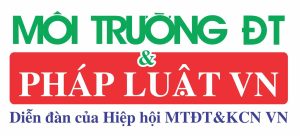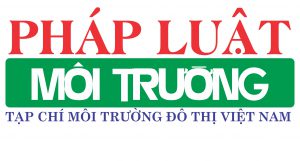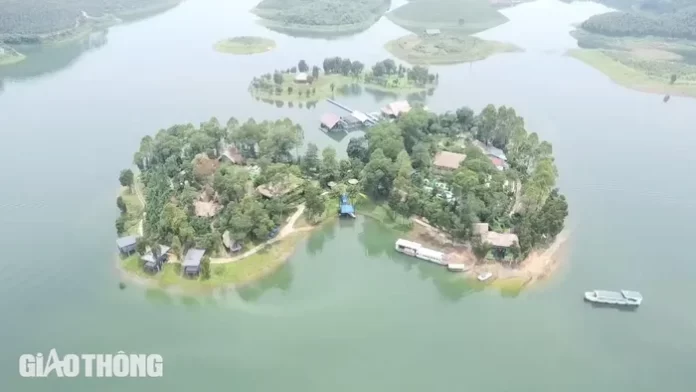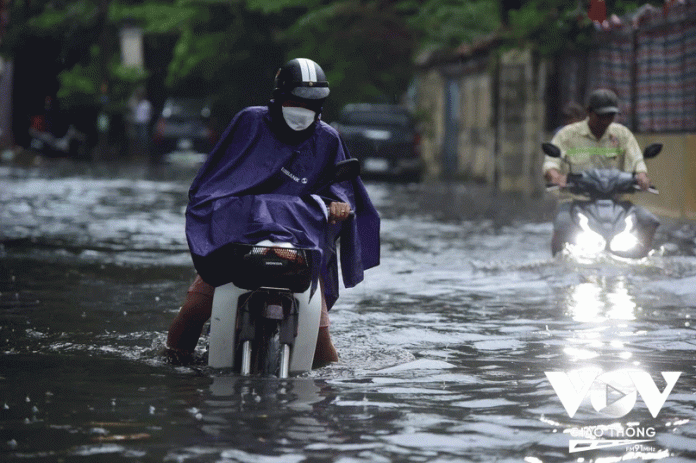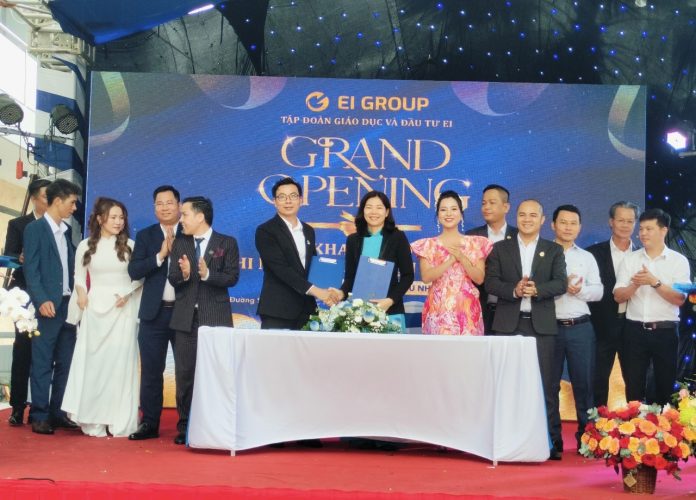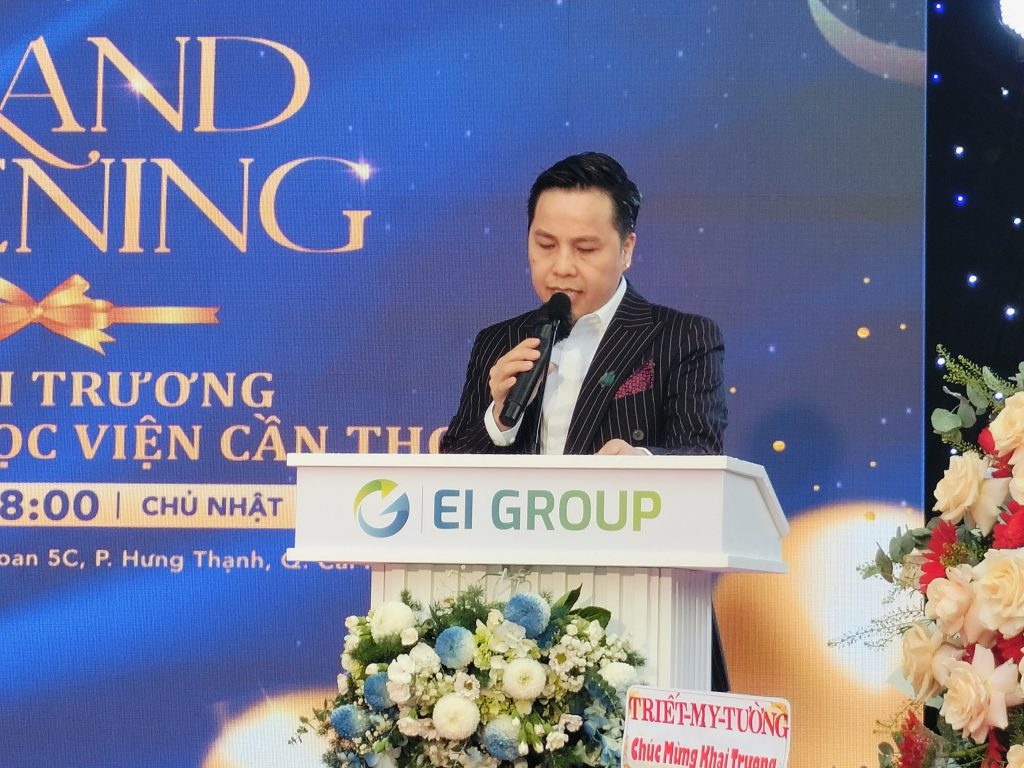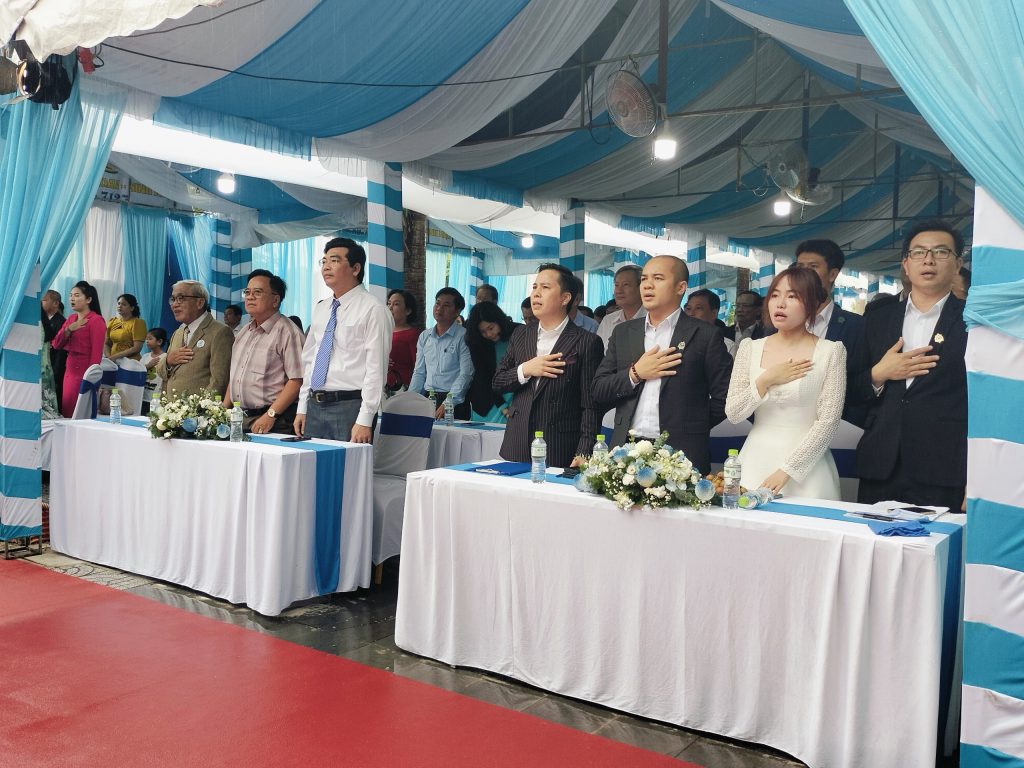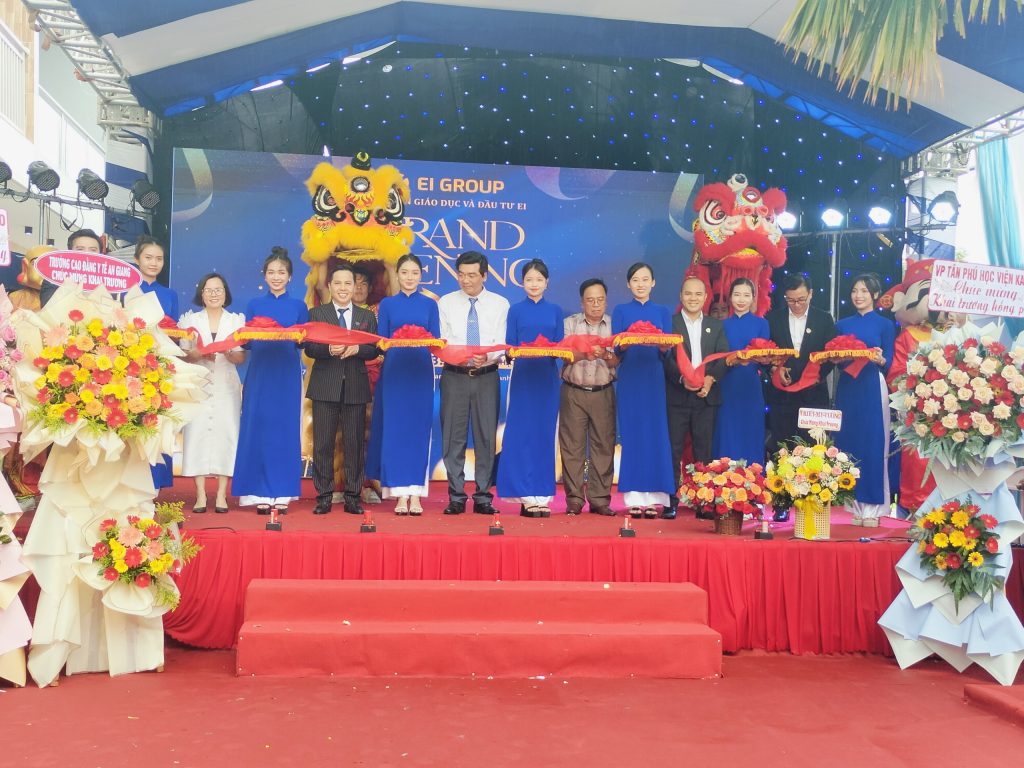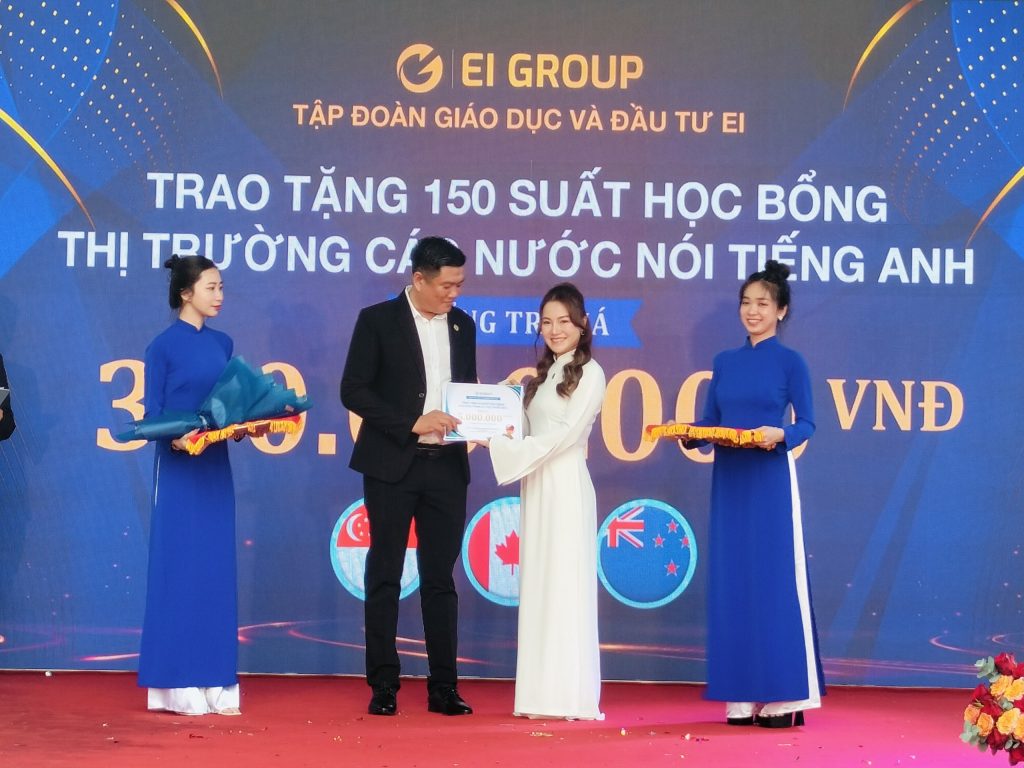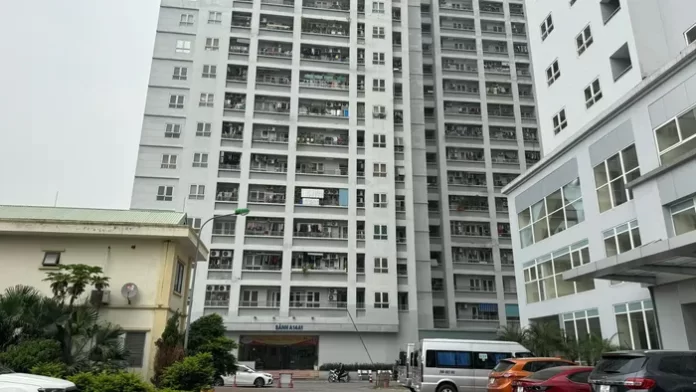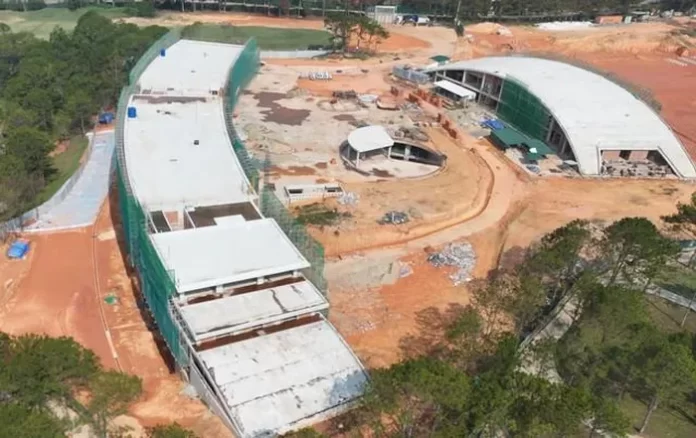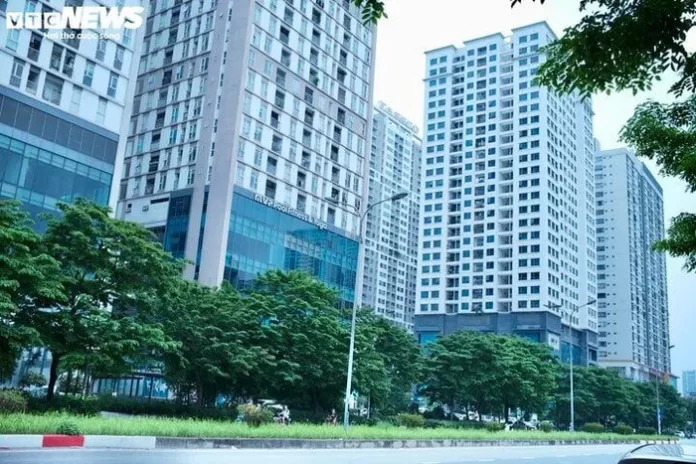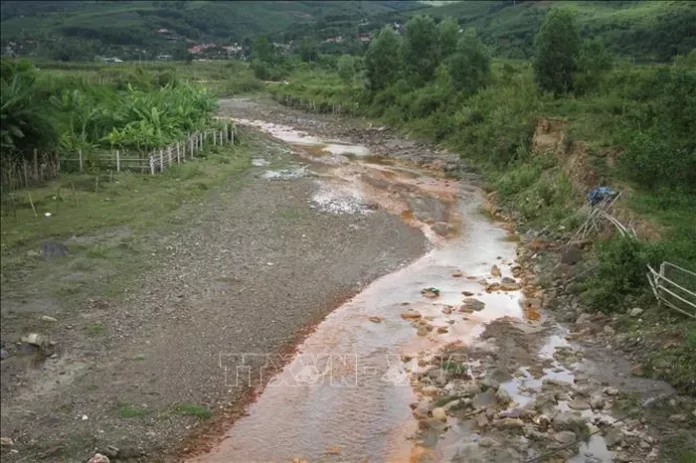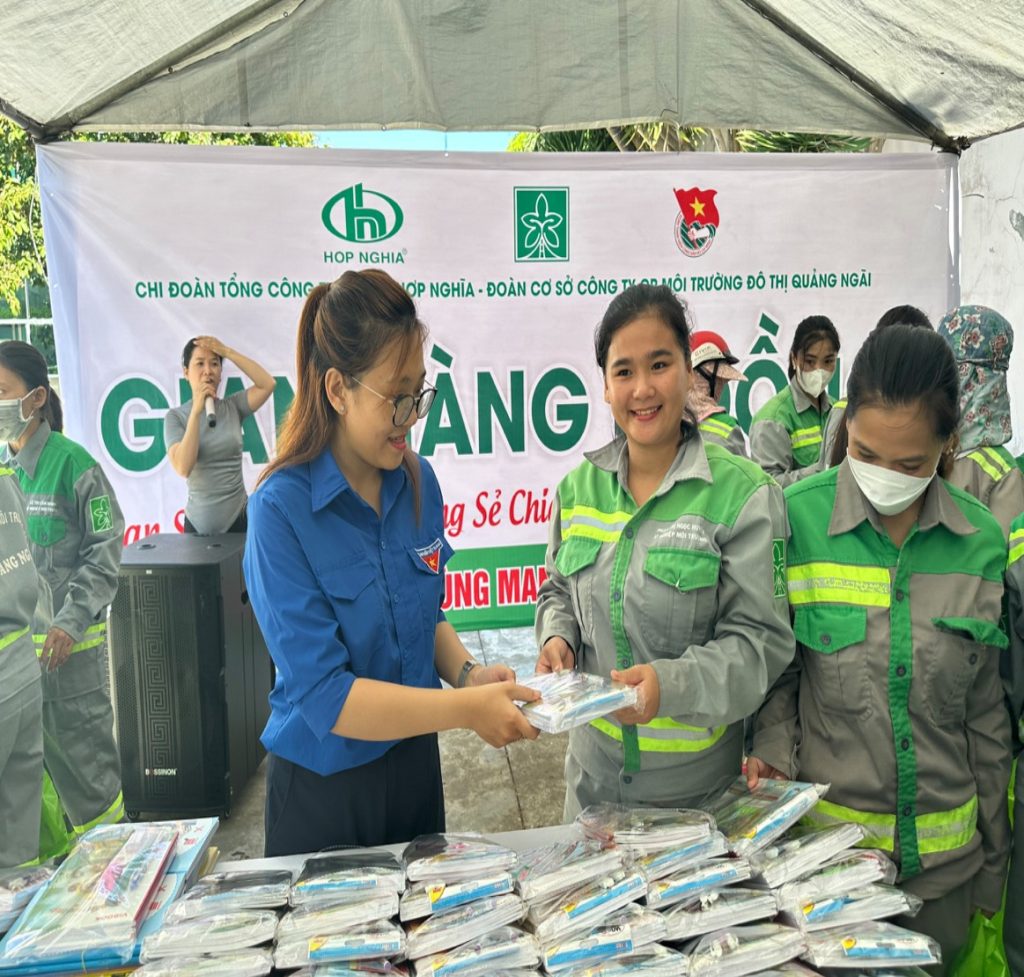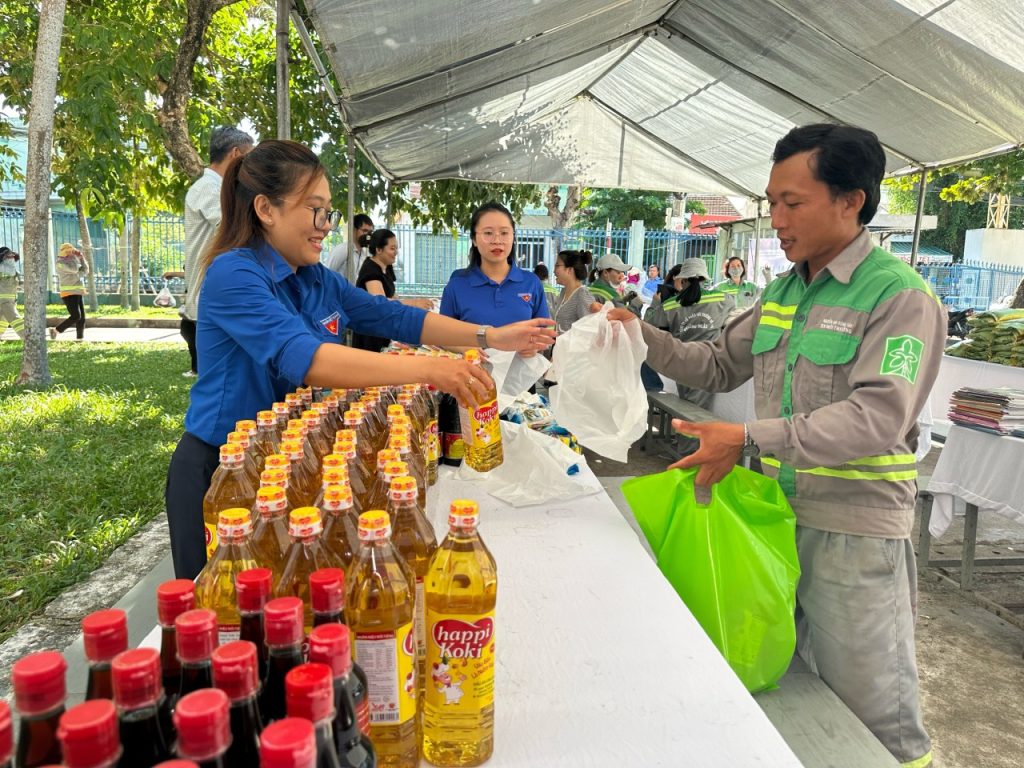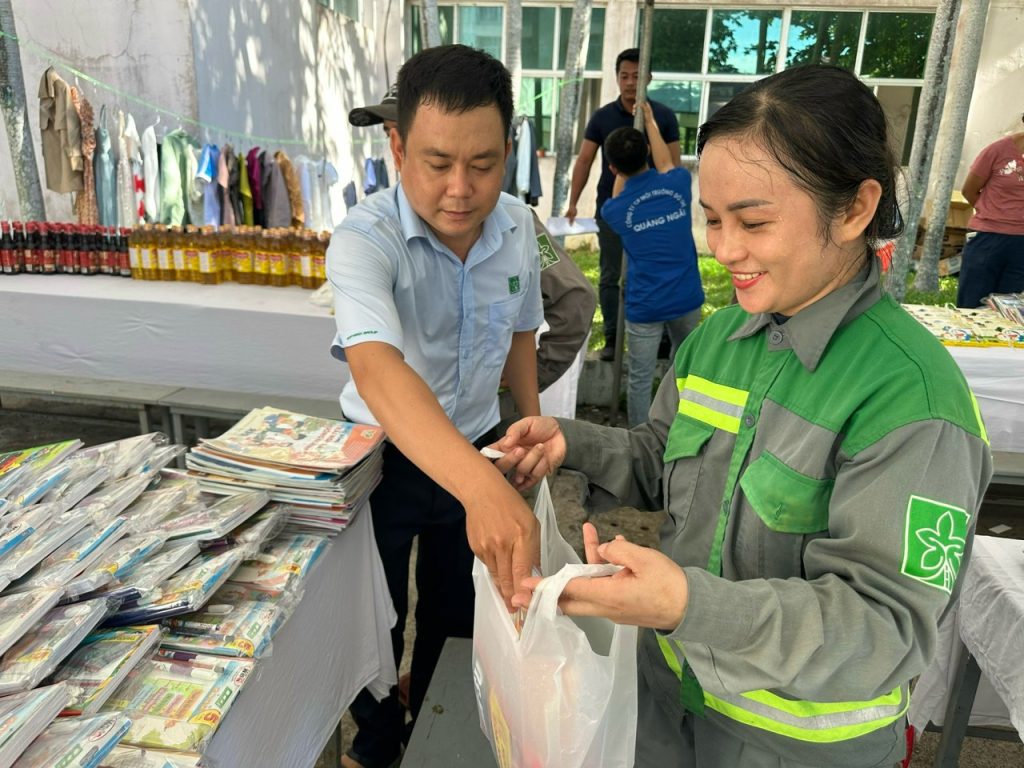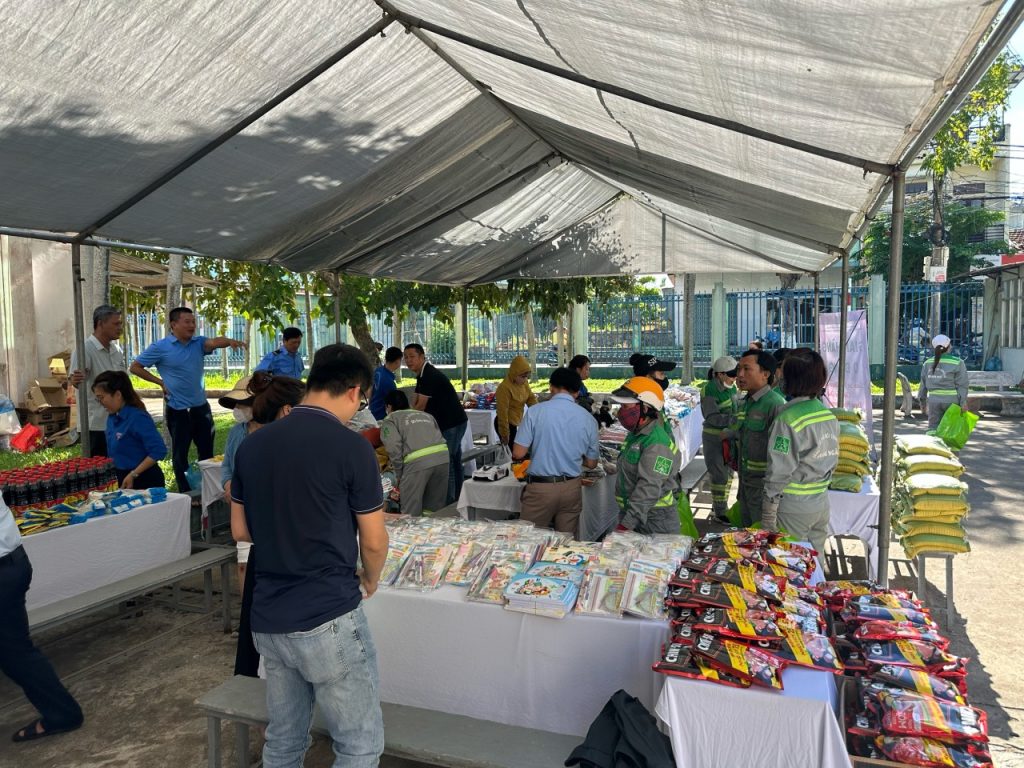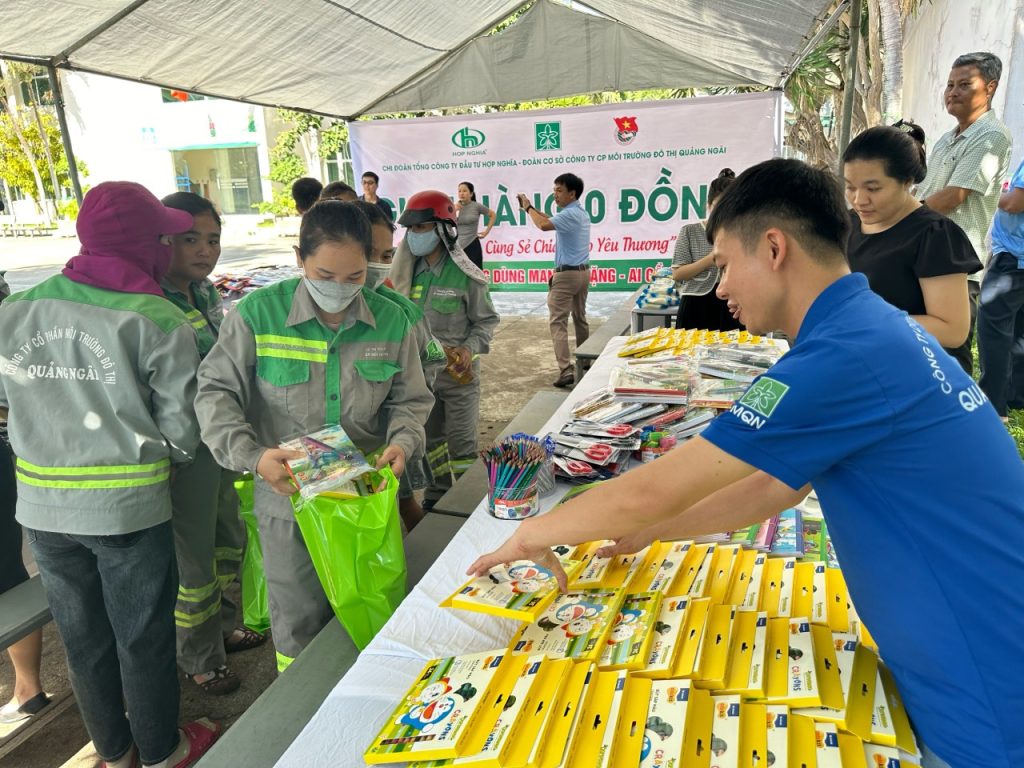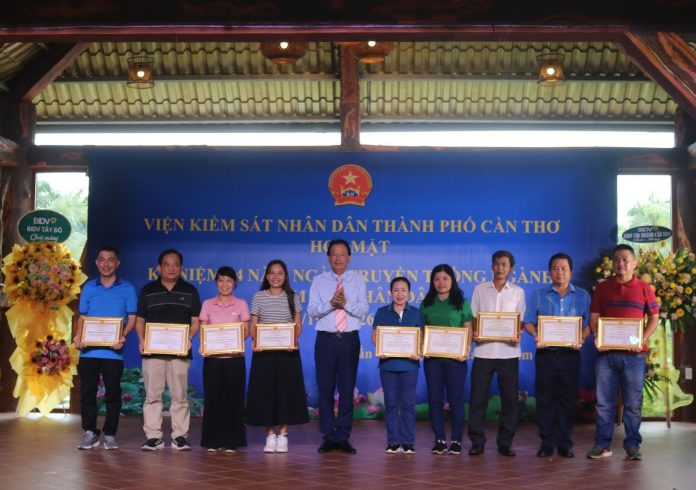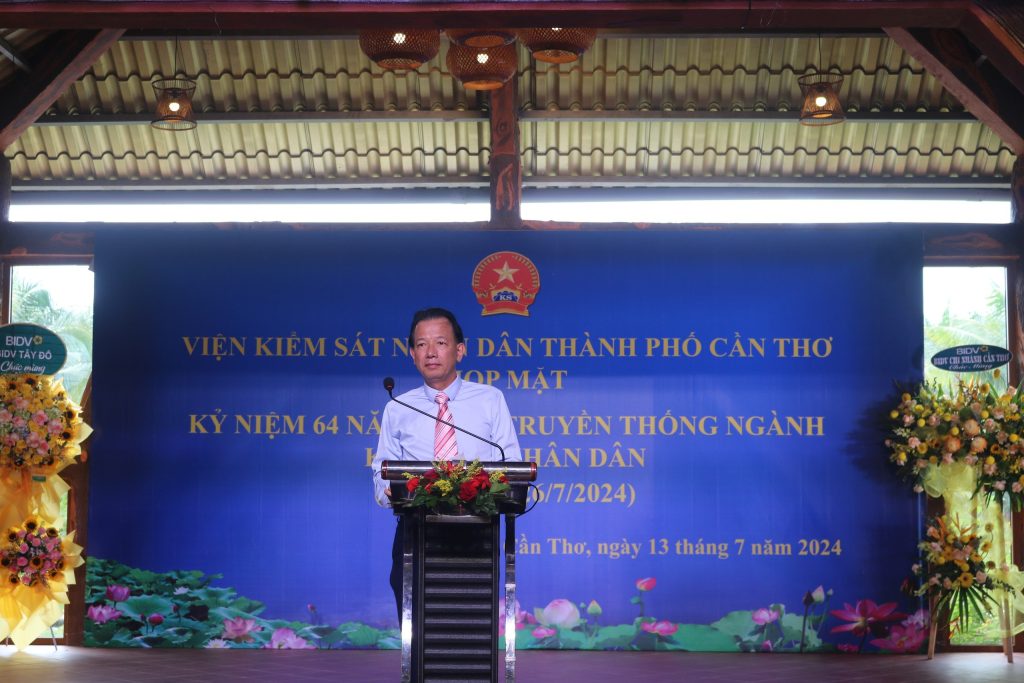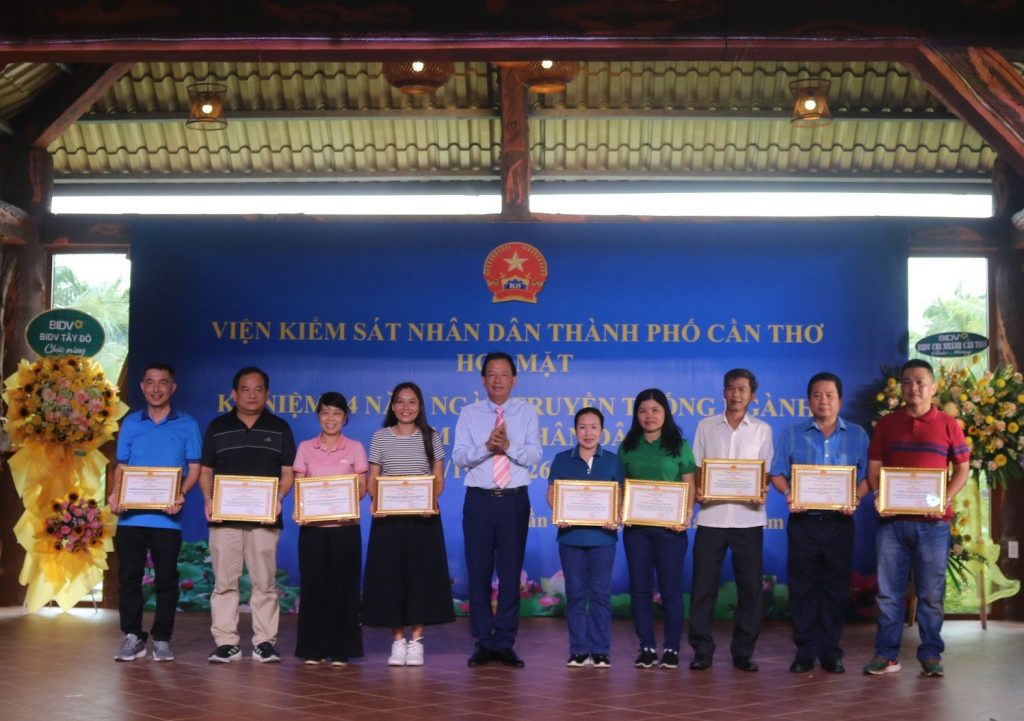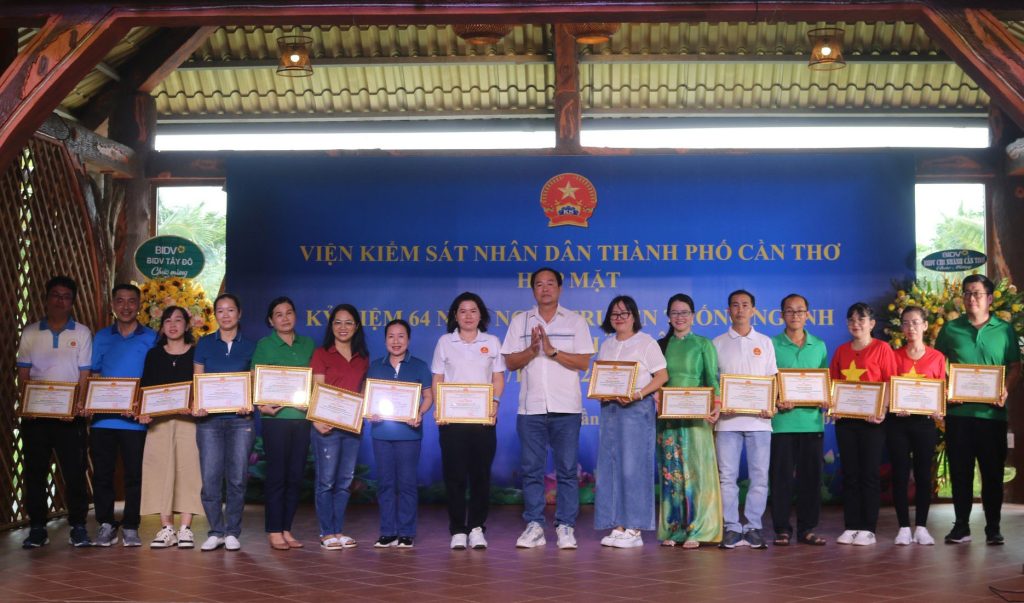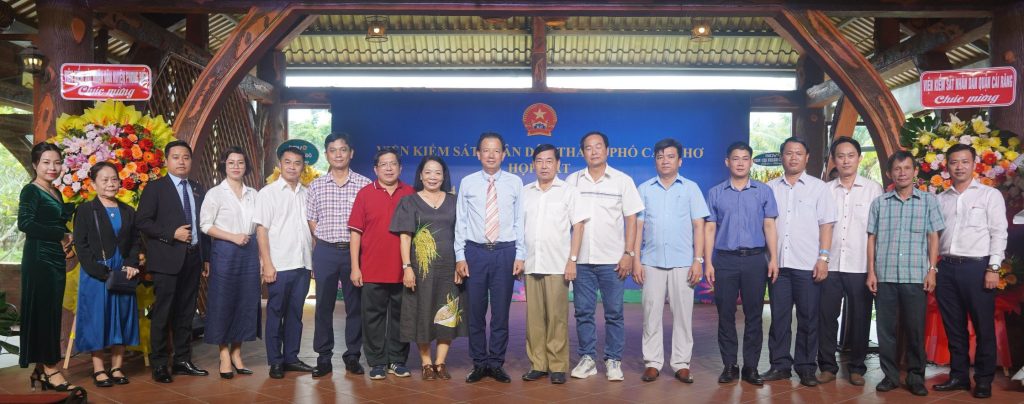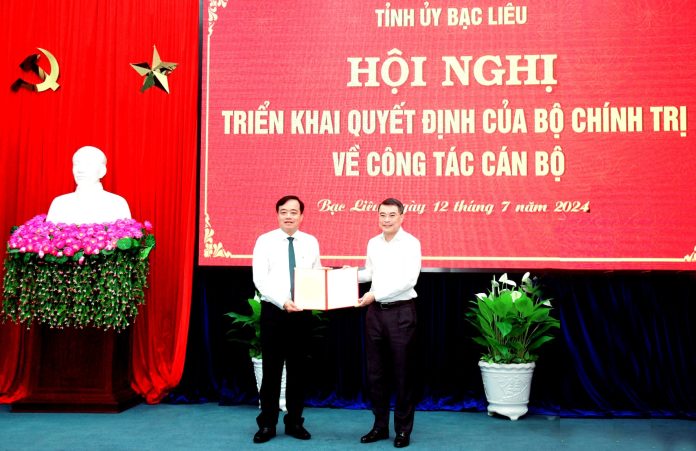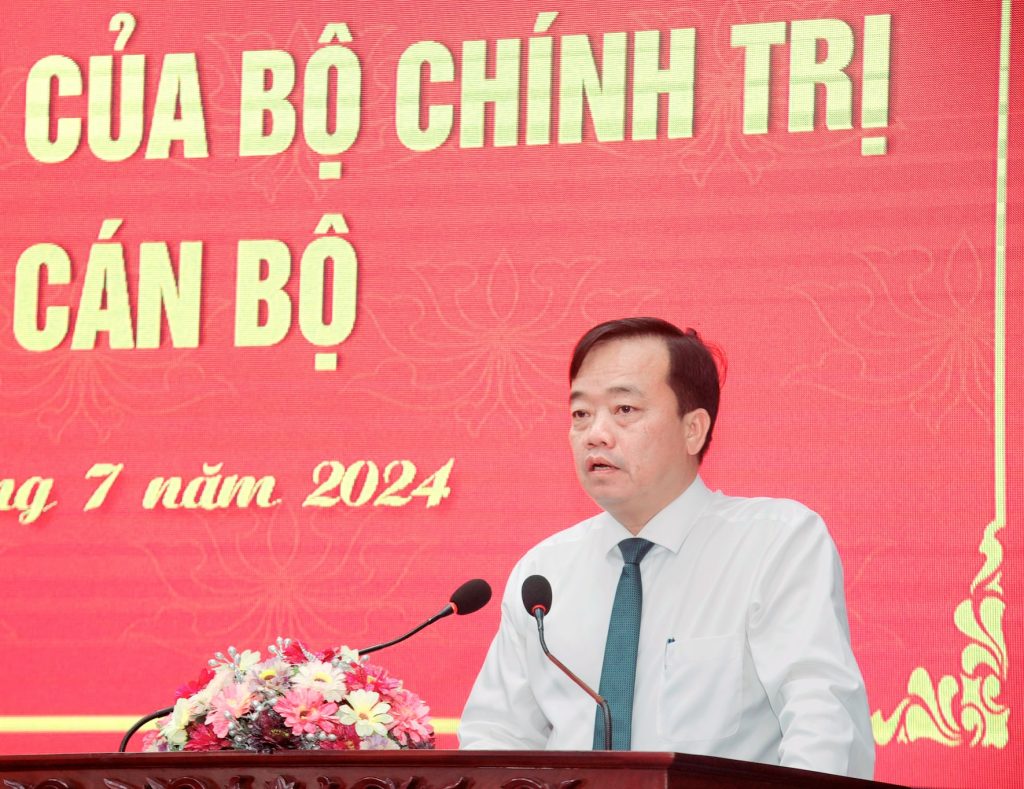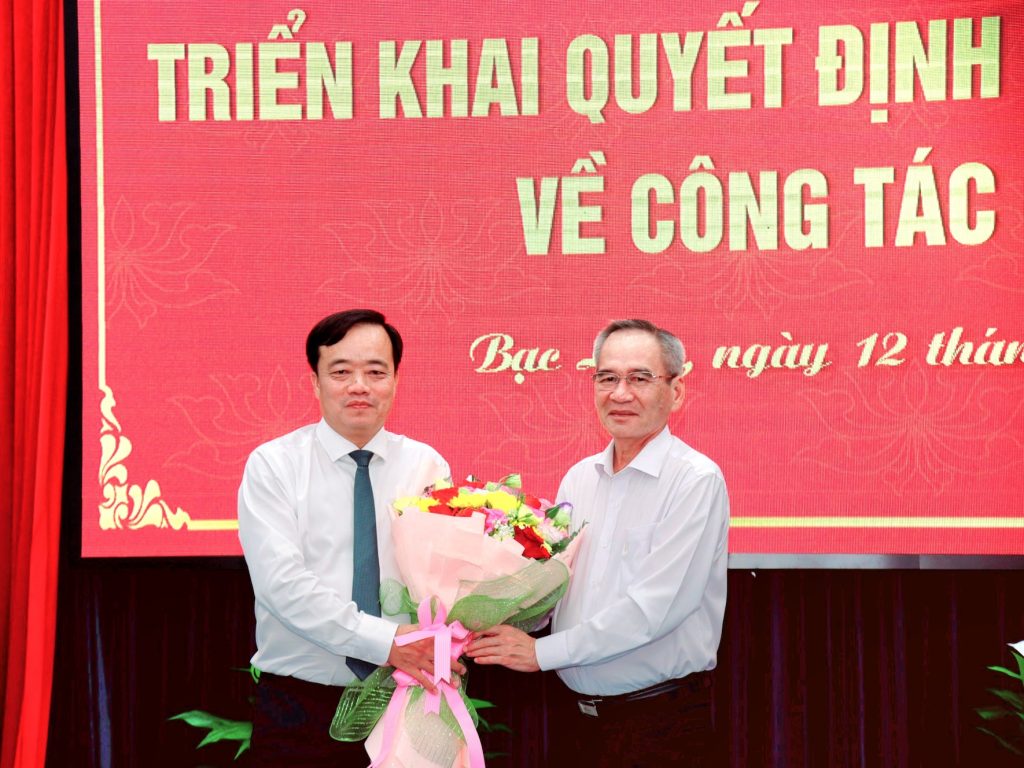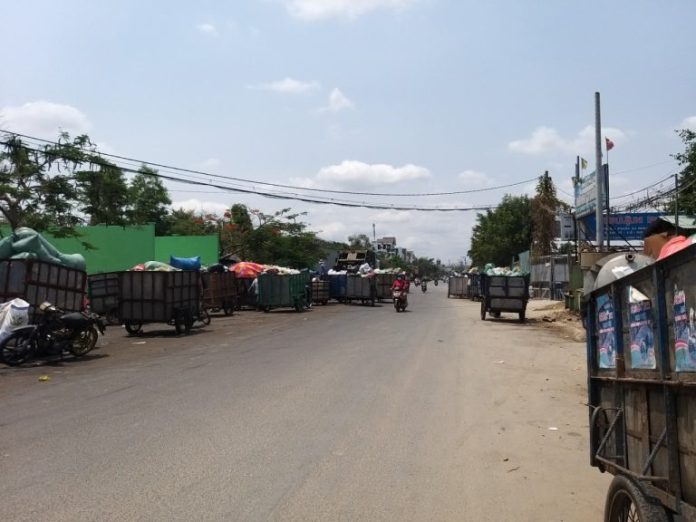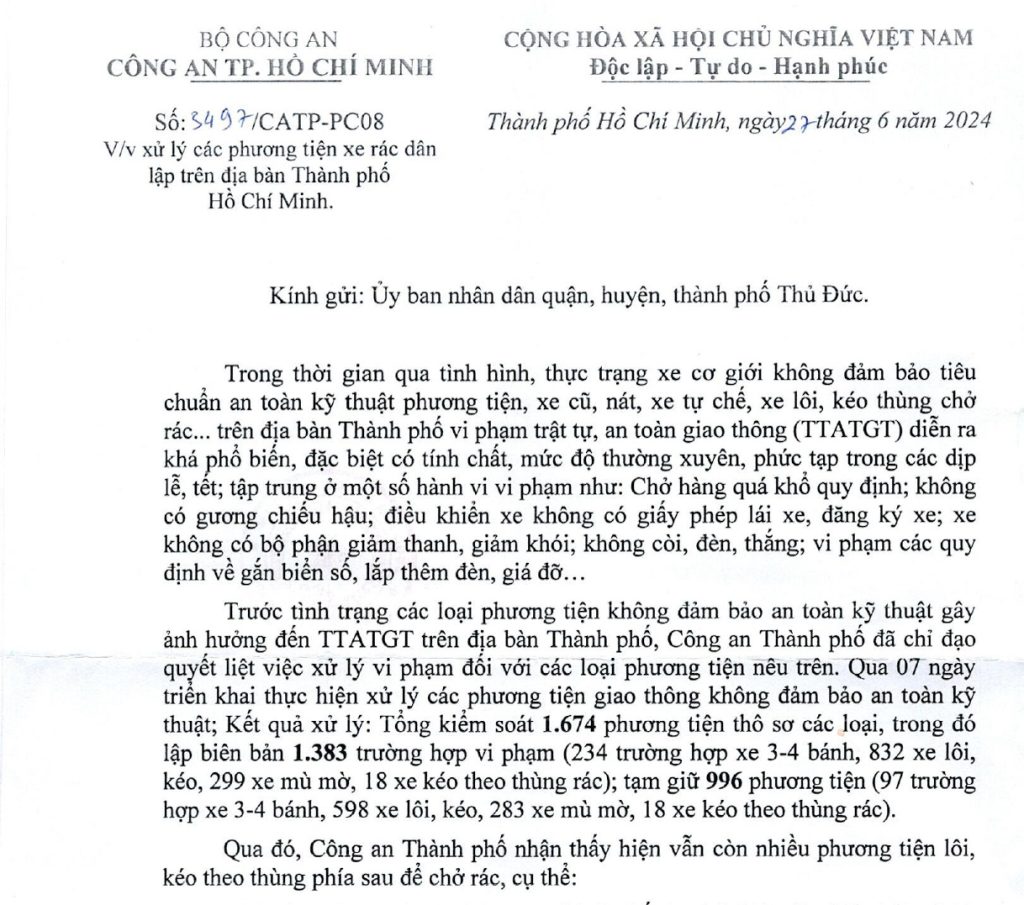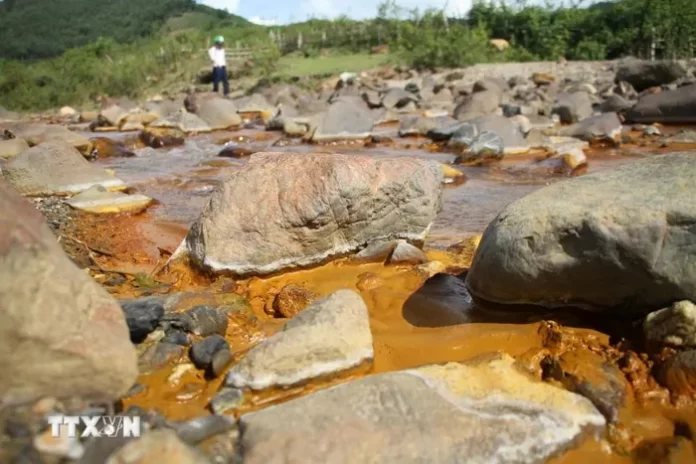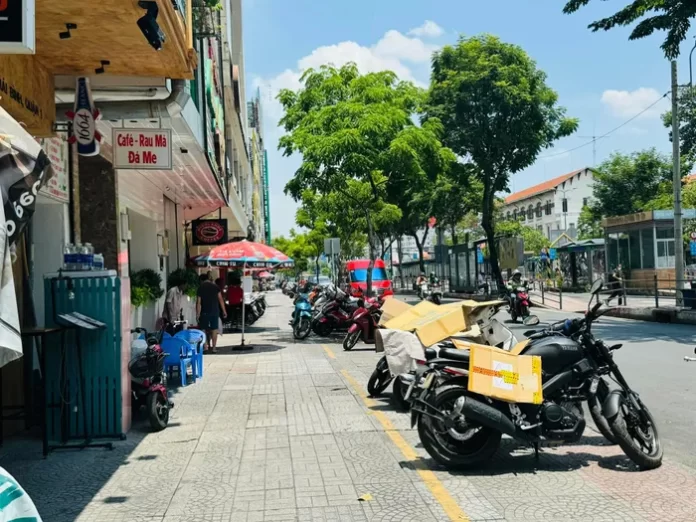Ban biên tập Chuyên trang Quản lý Môi trường, Tạp chí Môi trường và Đô thị Việt Nam trân trọng giới thiệu tới quý độc giả Công bố quốc tế lĩnh vực môi trường số 27-2024.
Về quản lý môi trường
– Độ chính xác của lượng mưa lịch sử từ các mô hình khí hậu toàn cầu CMIP6 dưới các đặc điểm khí hậu đa dạng ở Ấn Độ.
– Hiệu quả phát thải carbon nông nghiệp và thực hành nông nghiệp: Ý nghĩa của việc cân bằng giữa giảm phát thải carbon và tăng năng suất nông nghiệp.
– Các dấu hiệu phát triển và sinh hóa về tác động của hỗn hợp chất ô nhiễm dưới tác động của Biến đổi khí hậu toàn cầu.
– Tác động chung của việc tiếp xúc lâu dài với ô nhiễm không khí xung quanh đối với tỷ lệ mắc bệnh phổi tắc nghẽn mãn tính theo Khảo sát kiểm tra sức khỏe và dinh dưỡng quốc gia Hàn Quốc 2010–2019.
– Tương tác giữa bụi và khí hậu ở Trung Đông: Phân tích không gian-thời gian về độ sâu quang học của sol khí và các biến số khí hậu.
– Đánh giá tài liệu có hệ thống về ô nhiễm kim loại nặng của môi trường Nigeria từ quản lý chất thải điện tử: Đánh giá rủi ro liên quan đến sức khỏe và gây ung thư.
– Quản lý chuỗi cung ứng trung tính carbon bằng cách xem xét giảm thiểu rủi ro phát thải và mua sắm xanh thông qua việc ra quyết định tối ưu.
– Sản xuất và quản lý chất thải nhựa ở đô thị Jashore và các khu vực lân cận, Bangladesh: Tổng quan.
– Giám sát dự đoán môi trường nhiệt được xây dựng bằng cách sử dụng dữ liệu cảm biến hạn chế: Phương pháp không gian thời gian dựa trên deep learning.
Về môi trường đô thị
– Tích hợp quản lý chất thải rắn sinh hoạt đô thị với WASH: Ý nghĩa từ các nghiên cứu điển hình về giám sát ở châu Phi cận Sahara.
– Định lượng các kết nối từ xa của việc lưu trữ carbon trên đất xây dựng và các động lực kinh tế xã hội của nó ở tỉnh Quảng Đông.
– Phân tích tách thành phần dựa trên rủi ro để dự đoán lũ lụt đô thị ở các khu đô thị có mật độ cao bằng cách sử dụng LightGBM được tối ưu hóa Bayesian.
– Hệ thống phân hủy quy mô hộ gia đình ở Rwanda: Phân tích hiệu suất và hiệu ứng ròng của khí nhà kính.
– Đặc tính hạt trong các tòa nhà thương mại: Nghiên cứu cắt ngang tại 40 văn phòng ở Singapore.
– Phân tích sự phát sinh chất thải xây dựng đường bộ ở các nền kinh tế đang phát triển: Tập trung vào các dự án xây dựng bề mặt và nền móng ở Sri Lanka.
– Phản ứng của vi sinh vật đối với các giải pháp dựa trên thiên nhiên trong đất đô thị: Phân tích toàn diện bằng Biolog® EcoPlates™.
– Hướng tới mục tiêu carbon kép: Tương quan không gian với chỉ số phát thải carbon toàn diện ở các khu đô thị tích tụ dựa trên mô hình đánh giá mới.
– Đánh giá tính bền vững môi trường bằng cách kết hợp hệ thống dịch vụ sản phẩm và quan điểm vòng đời: Nghiên cứu điển hình về mô hình canh tác thủy canh đô thị ở Ấn Độ.
Về môi trường khu công nghiệp
– 4-Carboxyphenyl là nhóm cho hiệu quả trong nano Zn-Porphyrin cho pin mặt trời nhạy cảm với thuốc nhuộm.
– Các nguyên tố ĐẤT HIẾM trong lớp đất mặt của một thành phố công nghiệp ở Nga: Nguồn và đánh giá rủi ro sức khỏe con người.
– Đánh giá lượng phát thải khí nhà kính từ hệ thống xử lý và tái sử dụng nước thải in và nhuộm: Con đường tiềm năng hướng tới trung hòa carbon.
– Chuyển đổi tổ chức theo hướng kinh tế tuần hoàn ở các doanh nghiệp vừa và nhỏ. Ảnh hưởng của rào cản nội bộ.
– Điều tra nguồn gốc công nghiệp của terpenoid ở một thành phố ven biển phía bắc nước Pháp: Phân bổ nguồn kết hợp VOC nhân tạo, sinh học và oxy hóa.
– Đánh giá vòng đời tương lai so sánh của các nhà máy nhiệt điện than ở Hoa Kỳ với khả năng thu hồi carbon dựa trên MEA/MOF.
– Tác động sinh thái của các chất ô nhiễm dược phẩm và các lựa chọn cải thiện sức khỏe dòng sông – Phương pháp tiếp cận dựa trên phân tích rủi ro.
– Việc giảm các chất ô nhiễm chính trong các nhà máy nhiệt điện theo chính sách phát thải cực thấp có hiệu quả như thế nào?
– Sản xuất sạch geopolyme: Cơ hội phát triển bền vững của ngành xây dựng.
– Phương pháp đề xuất để xác định nhu cầu hydro công nghiệp – Cấu trúc cơ bản của mô hình quy trình có thể chuyển nhượng Phương pháp đề xuất để xác định nhu cầu hydro công nghiệp – Cấu trúc cơ bản của mô hình quy trình có thể chuyển nhượng.
CHUYÊN TRANG QUẢN LÝ MÔI TRƯỜNG
Tạp chí Môi trường và Đô thị Việt Nam
Xin trân trọng giới thiệu!
ENVIRONMENTAL MANAGEMENT / QUẢN LÝ MÔI TRƯỜNG
1. Accuracy of historical precipitation from CMIP6 global climate models under diversified climatic features over India
Environmental Development, Volume 50, June 2024, 100998
Abstract
The importance of global climate models (GCMs) is increasingly recognized due to their excellent ability to accurately predict climatic factors. These capabilities prove invaluable to water resources engineers as they facilitate effective planning and strategic decision-making. Finally, evaluating the performance of GCMs is very important because it allows us to simulate and predict different climate scenarios, empowering us to make informed choices. Therefore, the purpose of this study is to determine the degree of discordance between historical simulated data produced by the CMIP6 models and historical observational data over different climate zones of India. The ability of 24 different GCMs to reproduce the geographical and seasonal distribution of Indian precipitation has been tested by analyzing the daily historical precipitation forecasts from these models.
These models have been used to estimate the degree of uncertainty associated with the spatiotemporal variability of precipitation forecasts. More than 20% percent bias (PBIAS) is observed to occur predominantly in four climate classifications: polar tundra, temperate, cold, and tropical monsoon. In some regions of India, the CMIP6 models produce overestimated or underestimated results. The locations identified indicate that there have been changes of more than 20% PBIAS near Sivalik Range, Naga Hills, and Western Ghats. The precipitations of those regions that have been underestimated also imply that those locations have different climatic conditions. This study also highlights that CMIP6 GCMs are yet to produce better results near several Indian mountainous regions depending upon climates. The outcomes of this study will be very useful for reconstructing modeled data for that specific regions.
2. Developmental and biochemical markers of the impact of pollutant mixtures under the effect of Global Climate Change
Chemosphere, Volume 358, June 2024, 142162
Abstract
This study investigates the combined impact of microplastics (MP) and Chlorpyriphos (CPF) on sea urchin larvae (Paracentrotus lividus) under the backdrop of ocean warming and acidification. While the individual toxic effects of these pollutants have been previously reported, their combined effects remain poorly understood. Two experiments were conducted using different concentrations of CPF (EC10 and EC50) based on previous studies from our group. MP were adsorbed in CPF to simulate realistic environmental conditions. Additionally, water acidification and warming protocols were implemented to mimic future ocean conditions. Sea urchin embryo toxicity tests were conducted to assess larval development under various treatment combinations of CPF, MP, ocean acidification (OA), and temperature (OW). Morphometric measurements and biochemical analyses were performed to evaluate the effects comprehensively.
Results indicate that combined stressors lead to significant morphological alterations, such as increased larval width and reduced stomach volume. Furthermore, biochemical biomarkers like acetylcholinesterase (AChE), glutathione S-transferase (GST), and glutathione reductase (GRx) activities were affected, indicating oxidative stress and impaired detoxification capacity. Interestingly, while temperature increase was expected to enhance larval growth, it instead induced thermal stress, resulting in lower growth rates. This underscores the importance of considering multiple stressors in ecological assessments. Biochemical biomarkers provided early indications of stress responses, complementing traditional growth measurements. The study highlights the necessity of holistic approaches when assessing environmental impacts on marine ecosystems. Understanding interactions between pollutants and environmental stressors is crucial for effective conservation strategies. Future research should delve deeper into the impacts at lower biological levels and explore adaptive mechanisms in marine organisms facing multiple stressors. By doing so, we can better anticipate and mitigate the adverse effects of anthropogenic pollutants on marine biodiversity and ecosystem health.
3. Agricultural carbon emission efficiency and agricultural practices: Implications for balancing carbon emissions reduction and agricultural productivity increment
Environmental Development, Volume 50, June 2024, 101004
Abstract
The current Ukraine War underlines the importance of grain self-sufficiency. After the adoption of the Paris Agreement, two major challenges developing countries are facing in the coming decades are increasing agricultural production to ensure food security and reducing carbon emissions (CE). The key to such an “environment-development dilemma” is to improve agricultural carbon emission efficiency (CEE). Using China as the study site, we systematically analyze the impacts of agricultural management activities on agricultural CEE from 1997 to 2019. Global and local Moran’s I index tests provide evidence of a positive spatial dependence of agricultural CEE. Using the LISA cluster map, we observe that high CEE regions tend to be distributed together, dominated by environmental conditions.
However, with the promotion of agricultural management activities, such a clustering pattern vanished. Our spatial Durbin model (SDM) estimation results indicate that there are significant nonlinear relationships between agricultural practices and agricultural CEE. While the consumption of fertilizers and pesticides has economies of scale effects, the deployment of agricultural machinery and irrigation have diseconomies of scale effects on local CEE. Based on the SDM results, the direct and indirect effect estimation results suggest that the significant direct and spillover effects of many practices on agricultural CEE have opposite nonlinear shapes, implying a more complicated situation in promoting these activities, as the positive regional effect of an agricultural activity might have a negative impact on adjacent regions. All the results indicate that local policymakers should carefully tailor agricultural development policies based on local environmental conditions.
4. Joint effect of long-term exposure to ambient air pollution on the prevalence of chronic obstructive pulmonary disease using the Korea National Health and Nutrition Examination Survey 2010–2019
Chemosphere, Volume 358, June 2024, 142137
Abstract
Background
Little is known about the relationship between long-term joint exposure to mixtures of air pollutants and the prevalence of chronic obstructive pulmonary disease (COPD). We aimed to assess the joint impact of long-term exposure to ambient air pollution on the prevalence of COPD in Korea, especially in areas with high levels of air pollution.
Methods
We included 22,387 participants who underwent spirometry tests in 2010–2019. The community multiscale air quality model was used to estimate the levels of ambient air pollution at residential addresses. The average exposure over the 5 years before the examination date was used to calculate the concentrations of air pollution. Forced expiratory volume in 1 s and forced vital capacity were used to define restrictive lung disease, COPD, and moderate-to-severe COPD. Quantile-based g-computation models were used to assess the joint impact of air pollution on COPD prevalence.
Results
A total of 2535 cases of restrictive lung disease, 2787 cases of COPD, and 1399 cases of moderate-to-severe COPD were identified. In the individual pollutant model, long-term exposure was significantly associated with both restrictive lung disease and COPD. In the mixture pollutant model, the odds ratios (ORs, 95% confidence intervals) for restrictive lung disease increased with each quartile increment in the 1- to 5-year average mixtures: 1.14 (1.02–1.28, 1 year), 1.25 (1.11–1.41, 2 years), 1.26 (1.11–1.42, 3 years), 1.32 (1.16–1.51, 4 years), and 1.37 (1.19–1.58, 5 years), respectively. The increase in ORs of restrictive lung disease accelerated over time. By contrast, the ORs of COPD showed a decreasing trend over time.
Conclusions
Long-term exposure to air pollutants, both individually and jointly, was associated with an increased risk of developing COPD, particularly restrictive lung disease. Our findings highlight the importance of comprehensively assessing exposure to various air pollutants in relation to COPD.
5. Dust and climate interactions in the Middle East: Spatio-temporal analysis of aerosol optical depth and climatic variables
Science of The Total Environment, Volume 927, 1 June 2024, 172176
Abstract
The Middle East (ME) is grappling with an alarming increase in dust levels, measured as aerosol optical depth (AOD), which poses significant threats to air quality, human health, and ecological stability. This study aimed to investigate correlations between climate and non-climate driving factors and AOD in the ME over the last four-decade (1980–2020), based on analysis of three variables: actual evapotranspiration (AET), potential evapotranspiration (PET), and precipitation (P). A comprehensive analysis is conducted to discern patterns and trends, with a particular focus on regions such as Rub al-Khali, Ad-Dahna, An-Nafud Desert, and southern Iraq, where consistently high dust levels were observed. 77 % of the study area is classified as arid or semi-arid based on the aridity index. Our results indicate an upward trend in dust levels in Iraq, Iran, Yemen, and Saudi Arabia. We noted an increasing AET trend in regions such as the Euphrates and Tigris basin, northern-Iran, and the Nile region, along with rising PET levels in arid and semi-arid zones such as Iran, Iraq, and Syria.
Conversely, P showed a notable decrease in northern-Iraq, Syria, southwestern Iran, and southern-Turkey. Comparison of long-term changes (10-year moving averages) of AOD and P showed a consistent increase in AOD with P levels decreasing in all climate regions. The Budyko space analysis indicates shifts in evaporation ratio across different climate classes from 1980 to 2020, with predominant movement patterns towards higher aridity indices in arid and semi-arid regions, while factors beyond long-term aridity changes influence shifts in evaporation ratio across various climatic zones. The Middle East experiences complex and intricate interactions between dust events and their drivers. To address this issue, a comprehensive and multi-system approach is necessary, which considers both climate and non-climate drivers. Moreover, an efficient dust control strategy should include soil and water conservation, advanced monitoring, and public awareness campaigns that involve regional and international collaboration.
6. Systematic literature review of heavy metal contamination of the Nigerian environment from e-waste management: Associated health and carcinogenic risk assessment
Toxicology, Volume 505, June 2024, 153811
Abstract
E-waste -the aftermath of large amount of electrical and electronic equipment ferried into Africa from which Nigeria receives a significant chunk, is composed of components known to be hazardous to health. Composition of series of heavy metals (HMs) in e-waste is traceable to many health conditions including cancer which is hitherto incompletely understood. This study harmonizes primary data on HMs from e-waste in different Nigerian environmental media including the air, soil, surface dust, water and plant. We estimated the possible health implications, single and aggregative soil and water pollution indices both in adult and children categories, carcinogenic and non-carcinogenic risks secondary to HM exposure and mapped out the possible mechanism of carcinogenesis. Analysis showed that soil, water, surface dust and plant matrices in Nigerian environment are variedly but considerably contaminated with combination of HMs.
The significantly high values of the hazard quotient and hazard index of both water and surface dust matrices are indicative of adverse health effect of the non-carcinogenic risk. The highest HQ is generated by Pb and Cr through dermal exposure to soil and surface dust with mean values of 1718.48, 1146.14, 1362.10 and 1794.61 respectively among Nigerian children followed by the oral exposure. This pattern of observation is similar to that obtained for adult category. HI due to Pb and Cr in soil constitutes the highest HI (2.05E+03 and 1.18E+03 respectively) followed by surface dust. However, this study precipitates the observation that children are more at health risk than adults in contaminated environment. Carcinogenic risk also follows the same pattern of expression in the Nigerian environment. We conclude that exposure to e-waste poses significant carcinogenic and non-carcinogenic health risks and the induction of toxicity may be mediated via DNA damage, oxidative stress and inflammatory/immune cells dysfunction in Nigerian environment.
7. Identification of NOx emissions and source characteristics by TROPOMI observations – A case study in north-central Henan, China
Science of The Total Environment, Volume 931, 25 June 2024, 172779
Abstract
With the development of industries, air pollution in north-central Henan is becoming increasingly severe. The TROPOspheric Monitoring Instrument (TROPOMI) provides nitrogen dioxide (NO2) column densities with high spatial resolution. Based on TROPOMI, in this study, the nitrogen oxides (NOx) emissions in north-central Henan are derived and the emission hotspots are identified with the flux divergence method (FDM) from May to September 2021. The results indicate that Zhengzhou has the highest NOx emissions in north-central Henan. The most prominent hotspots are in Guancheng Huizu District (Zhengzhou) and Yindu District (Anyang), with emissions of 448.4 g/s and 300.3 g/s, respectively. The Gaussian Mixture Model (GMM) is applied to quantify the characteristics of emission hotspots, including the diameter, eccentricity, and tilt angle, among which the tilt angle provides a novel metric for identifying the spatial distribution of pollution sources.
Furthermore, the results are compared with the CAMS global anthropogenic emissions (CAMS-GLOB-ANT) and Multi-resolution Emission Inventory model for Climate and air pollution research (MEIC), and they are generally in good agreement. However, some point sources, such as power plants, may be missed by both inventories. It is also found that for emission hotspots near transportation hubs, CAMS-GLOB-ANT may not have fully considered the actual traffic flow, leading to an underestimation of transportation emissions. These findings provide key information for the accurate implementation of pollution prevention and control measures, as well as references for future optimization of emission inventories. Consequently, deriving NOx emissions from space, quantifying the characteristics of emission hotspots, and combining them with bottom-up inventories can provide valuable insights for targeted emission control.
8. A carbon neutral supply chain management by considering emission-risk minimization and green purchasing through optimal decision-making
Environmental Research, Volume 251, Part 1, 15 June 2024, 118662
Abstract
This study addresses critical gaps in supply chain management (SCM) by integrating emission-risk minimization (ERM), green purchasing (GP), and profit maximization (PM). The research focuses on the optimal behaviors of manufacturers, agents, and retailers within the SCM framework to achieve carbon neutrality and reduce carbon dioxide emissions (CO2e). This study considers Guangdong province, China, a region facing challenges in optimizing energy systems and meeting CO2e reduction targets. Simulation-based optimization techniques within mathematical models are employed.
A design of experiment (DOE) method was used to explore the dynamics of key variables in the SCM environment. Results reveal optimal behaviors for manufacturers, agents, and retailers, demonstrating the ideal values for profit and pricing decisions. Manufacturers optimize production quantity, achieving CO2e reduction and PM through ERM. Agents exhibit a strong commitment to GP practices, enhancing PM and carbon-neutral goals. Retailers get more PM than manufacturers and agents, contributing to a clean environment. Interestingly, retailers make contributions to the clean environment without considering ERM and GP in SCM. The study contributes novel insights by addressing the identified gap in SCM research, emphasizing the joint consideration of ERM, GP, and PM. This research assists manufacturers, agents, and retailers in terms of PM for economic objectives. It cleans the environment through carbon-neutral SCM in society.
9. Effects of short- and long-term exposures to multiple air pollutants on depression among the labor force: A nationwide longitudinal study in China’
Science of The Total Environment, Volume 931, 25 June 2024, 172614
Abstract
Background
Depression prevalence has surged within the labor force population in recent years. While links between air pollutants and depression were explored, there was a notable scarcity of research focusing on the workforce.
Methods
This nationwide longitudinal study analyzed 27,457 workers aged 15–64. We estimated monthly mean concentrations of fine particulate matter (PM2.5), its primary components, and Ozone (O3) at participants’ residences using spatiotemporal models. To assess the relationship between short- (1 to 3 months) and long-term (1 to 2 years) exposure to various air pollutants and depressive levels and occurrences, we employed linear mixed–effects models and mixed–effects logistic regression. We considered potential occupational moderators, such as labor contracts, overtime compensation, and total annual income.
Results
We found significant increases in depression risks within the workforce linked to both short- and long-term air pollution exposure. A 10 μg/m3 rise in 2-year average PM2.5, black carbon (BC), and O3 concentrations correlated with increments in depressive scores of 0.009, 0.173, and 0.010, and a higher likelihood of depression prevalence by 0.5 %, 12.6 %, and 0.7 %. The impacts of air pollutants and depression were more prominent in people without labor contracts, overtime compensation, and lower total incomes.
Conclusion
Exposures to air pollutants could increase the risk of depression in the labor force population. The mitigating effects of higher income, benefits, and job security against depression underscore the need for focused mental health interventions.
10. Plastic waste production and management in Jashore municipality and its surrounding areas, Bangladesh: An overview
Physics and Chemistry of the Earth, Parts A/B/C, Volume 134, June 2024, 103580
Abstract
This study examines the contribution of plastics to total waste generation in Jashore district, Bangladesh. With a staggering daily production of 3000 tons of plastic waste in Bangladesh, the district of Jashore emerges as a significant contributor. A descriptive survey was conducted among 450 respondents of Jashore Sadar Upazila. Factor analysis was used based on the Likert scale to determine the people’s awareness issues. The study reveals that the predominant types of plastic wastes are Low-density polyethylene (LDPE) at 40.75%, followed by Polyethylene terephthalate (PET) at 28.15%, and High-density polyethylene (HDPE) at 28.10%, with the remaining 3.0% comprising other types. The most common waste management practices in both urban and rural areas of Jashore Sadar Upazila include burying (3.9%), open dumping (41.4%), open burning (32.4%), recycling (approximately 7.65%), and waste disposal in designated bins (approximately 14.7%). The open dumping of plastic remains in the environment and deteriorates the environmental quality. Descriptive analysis was done using the Principal Component Analysis (PCA) model. Attitudes of the respondents were determined considering the plastic use and disposal pattern. Fourteen factors were used in this case and Eigenvalues (EVs) were considered. About 58% of the EVs were <0.5, indicating that recycling was highly encouraged. On the contrary, about 42% of the EVs were >0.5, indicating that reusing plastic waste was not beneficial for the environment. The study proposes that reusing plastic waste could play a pivotal role in reducing environmental pollution.
11. Predictive monitoring of built thermal environment using limited sensor data: A deep learning-based spatiotemporal method
Sustainable Energy Technologies and Assessments, Volume 66, June 2024, 103823
Abstract
Spatiotemporal monitoring of the built thermal environment plays an important role in promoting building thermal and energy management for development of sustainable buildings. However, the limited number of sensors and the uncertain airflow dynamics increase the difficulty for monitoring the nonuniformly distributed temperature states in the built thermal environment. In this study, a deep learning based predictive monitoring framework is proposed for spatiotemporal reconstruction and uncertainty quantification of the high-dimensional airflow fields in built environment based on limited sensors.
The monitoring framework (iCVAE-BiLSTM) is developed by combining improved Conditional Variational Auto-Encoder (iCVAE), Bi-directional Long Short-Term Memory Network (BiLSTM) and Monte Carlo Simulation (MCS). Specifically, iCVAE is used in combination with BiLSTM model to model the spatiotemporal variations of the distributed indoor temperature states, while MCS is applied to quantify the uncertainties in temperature variations. A case study is carried out in a confined space under mixing convection for validation of the iCVAE-BiLSTM based monitoring framework. Moreover, the effects of sensor numbers and sensor placement on monitoring accuracy are quantitatively investigated. Our study demonstrates that the proposed iCVAE-BiLSTM model has significant application potentials for monitoring built environment and for promoting the development of energy-efficient buildings.
12. Life cycle assessment of plastic waste in Suzhou, China: Management strategies toward sustainable express delivery
Journal of Environmental Management, Volume 360, June 2024, 121201
Abstract
The explosive growth of China’s express delivery industry has greatly increased plastic waste, with low-value plastics not effectively utilized, such as PE packaging bags, which are often not recycled and end up in landfills or incinerators, causing significant resource waste and severe plastic pollution. A gate -to- grave life cycle assessment was adopted to assess the impacts of express delivery plastic waste (EDPW) management models (S1, landfill; S2, incineration; S3, mechanical pelletization), with Suzhou, China as a case. Results showed that mechanical pelletization, was the most environmentally advantageous, exhibiting a comprehensive environmental impact potential of −215.54 Pt, significantly lower than that of landfill (S1, 78.45 Pt) and incineration (S2, -121.77 Pt).
The analysis identified that the end-of-life disposal and sorting stages were the principal contributors to environmental impacts in all three models, with transportation and transfer stages of residual waste having minimal effects. In terms of all environmental impact categories, human carcinogenic toxicity (HTc) emerged as the most significant contributor in all three scenarios. Specifically, S1 exhibited the most detrimental effect on human health, while S2 and S3 showed positive environmental impacts. Based on these findings, it is recommended that the application and innovation in mechanical recycling technologies be enhanced, the promotion of the eco-friendly transformation of packaging materials be pursued, and a sustainable express delivery packaging recycling management system be established. These strategies are essential for achieving more eco-friendly management of EDPW, reducing its environmental pollution, and moving towards more sustainable express delivery management practices.
13. Sustainable management of land use patterns and water allocation for coordinated multidimensional development
Journal of Cleaner Production, Volume 457, 10 June 2024, 142412
Abstract
The sustainable and integrated management of resources is a crucial approach to achieving sustainable regional development in the face of limited land and increasingly scarce water resources. This paper proposes a multidimensional optimization model to jointly optimize land use patterns and water resource allocation under the conditions of maximizing economic benefits and minimizing social differences, ecological loads, environmental pollution, and carbon emissions. The optimization model is solved using the affiliation function method and then combined with random forest (RF) and cellular automata (CA) models to further obtain the optimal spatial layout of land use. This paper takes the Mid-Yangtze River City Cluster as an example and optimizes the land use pattern and water allocation in the region in 2020 and 2030. The results of the study show that the optimized water and land resource allocation scheme performs better than the status quo in all dimensions. The optimized economic benefits, social effects, ecological effects, environmental effects, and overall sustainability in 2020 are increased by 45.97%, 22.89%, 10.07%, 24.65%, and 42.73%, respectively. By 2030, overall sustainability reaches 0.69. The developed modeling framework helps to elucidate the internal linkages between land use and water allocation, and it provides decision-makers with diversified approaches to land and water resource management and adjustment for different cities in different periods, which promotes the sustainable development of urban agglomerations.
14. Comprehensive review of emerging contaminants: Detection technologies, environmental impact, and management strategies
Ecotoxicology and Environmental Safety, Volume 278, 15 June 2024, 116420
Abstract
Emerging contaminants (ECs) are a diverse group of unregulated pollutants increasingly present in the environment. These contaminants, including pharmaceuticals, personal care products, endocrine disruptors, and industrial chemicals, can enter the environment through various pathways and persist, accumulating in the food chain and posing risks to ecosystems and human health. This comprehensive review examines the chemical characteristics, sources, and varieties of ECs. It critically evaluates the current understanding of their environmental and health impacts, highlighting recent advancements and challenges in detection and analysis.
The review also assesses existing regulations and policies, identifying shortcomings and proposing potential enhancements. ECs pose significant risks to wildlife and ecosystems by disrupting animal hormones, causing genetic alterations that diminish diversity and resilience, and altering soil nutrient dynamics and the physical environment. Furthermore, ECs present increasing risks to human health, including hormonal disruptions, antibiotic resistance, endocrine disruption, neurological effects, carcinogenic effects, and other long-term impacts. To address these critical issues, the review offers recommendations for future research, emphasizing areas requiring further investigation to comprehend the full implications of these contaminants. It also suggests increased funding and support for research, development of advanced detection technologies, establishment of standardized methods, adoption of precautionary regulations, enhanced public awareness and education, cross-sectoral collaboration, and integration of scientific research into policy-making. By implementing these solutions, we can improve our ability to detect, monitor, and manage ECs, reducing environmental and public health risks.
15. From waste management to circular economy: Leveraging thermophiles for sustainable growth and global resource optimization
Journal of Environmental Management, Volume 360, June 2024, 121136
Abstract
Waste of any origin is one of the most serious global and man-made concerns of our day. It causes climate change, environmental degradation, and human health problems. Proper waste management practices, including waste reduction, safe handling, and appropriate treatment, are essential to mitigate these consequences. It is thus essential to implement effective waste management strategies that reduce waste at the source, promote recycling and reuse, and safely dispose of waste. Transitioning to a circular economy with policies involving governments, industries, and individuals is essential for sustainable growth and waste management.
The review focuses on diverse kinds of environmental waste sources around the world, such as residential, industrial, commercial, municipal services, electronic wastes, wastewater sewerage, and agricultural wastes, and their challenges in efficiently valorizing them into useful products. It highlights the need for rational waste management, circularity, and sustainable growth, and the potential of a circular economy to address these challenges. The article has explored the role of thermophilic microbes in the bioremediation of waste. Thermophiles known for their thermostability and thermostable enzymes, have emerged to have diverse applications in biotechnology and various industrial processes. Several approaches have been explored to unlock the potential of thermophiles in achieving the objective of establishing a zero-carbon sustainable bio-economy and minimizing waste generation. Various thermophiles have demonstrated substantial potential in addressing different waste challenges. The review findings affirm that thermophilic microbes have emerged as pivotal and indispensable candidates for harnessing and valorizing a range of environmental wastes into valuable products, thereby fostering the bio-circular economy.
16. Blue-green infrastructure in view of Integrated Urban Water Management: A novel assessment of an effectiveness index
Water Research, Volume 257, 15 June 2024, 121658
Abstract
Addressing urban water management challenges requires a holistic view. Sustainable approaches such as blue-green infrastructure (BGI) provide several benefits, but assessing their effectiveness demands a systemic approach. Challenges are magnified in informal areas, leading to the combination of integrated urban water management (IUWM) with BGI as a proposed solution by this research. We employed the Urban Water Use (UWU) model to assess the effectiveness index (EI) of BGI measures in view of IUWM after stakeholder consultation.
The procedure in this novel assessment includes expert meetings for scenario building and resident interviews to capture the community’s vision. To assess the impact of IUWM on the effectiveness of BGI measures, we proposed a simulation with BGI only and then three simulations with improvements to the water and sewage systems. The results of the EI analysis reveal a substantial improvement in the effectiveness of BGI measures through IUWM combination. Moreover, we offer insights into developing strategies for UWU model application in informal settlements, transferrable to diverse urban areas. The findings hold relevance for policymakers and urban planners, aiding informed decisions in urban water management.
URBAN ENVIRONMENT/ MÔI TRƯỜNG ĐÔ THỊ
1. Integrating urban household solid waste management with WASH: Implications from case studies of monitoring in sub-Saharan Africa
Environmental Development, Volume 50, June 2024, 100990
Abstract
Water, Sanitation and Hygiene (WASH) are commonly grouped for service delivery planning, monitoring and policy, reflecting their many interconnecting impacts, but few studies articulate household-level WASH-solid waste interactions. We aim to assess mismanaged solid waste interactions with WASH that affect urban households and whether integrated waste-WASH indicators can be constructed to monitor these interactions. Via literature review, we identify three trade-offs and seven synergies between WASH and waste management for urban households. Trade-offs arise from consumption of water packaged in bottles or bags and disposable diapers (DDs), whilst synergies include opportunities for households with water services to wash separated waste or cloth diapers. One trade-off (packaged water consumption) has grown rapidly in southeast Asia and West Africa. Household surveys for Ghana and Kenya demonstrate that the urban population lacking waste collection services overlaps strongly with those lacking WASH services.
In Kenya, 3.3 million people simultaneously lacked waste collection, hygiene, and basic sanitation services. Finally, we construct indicators from household survey micro-data to measure DD and packaged water consumption in households lacking waste services. Case studies show that from 2012–13 to 2016–17, packaged water consumption grew among Ghanaian households burning or dumping waste, whilst most urban Nigerian households consuming DD lack waste collection services. We conclude that household survey micro-data can be used to construct trade-off measures to inform policy and target services towards populations simultaneously exposed to uncollected waste and lacking WASH services. However, such analyses require an institutional mechanism to coordinate cross-goal monitoring and greater survey data harmonisation. In countries where large populations lack both waste collection and WASH services or with growing DD or packaged water consumption, balanced evidence is needed on DD and packaged water’s impacts from both WASH and solid waste management perspectives.
2. Quantifying the teleconnections of carbon storage in construction land and its socioeconomic driving forces in Guangdong Province
Journal of Cleaner Production, Volume 456, 1 June 2024, 142390
Abstract
The development of regional trade has fostered teleconnections in land resource across various regions, emerging as a pivotal influence on the expansion of construction land. However, the potential consequences of regional trade on carbon storage associated with construction land remain largely unquantified. Therefore, this study zeroes in on Guangdong Province as the focal point, employing China’s multiregional input-output model to quantify interregional teleconnections and delineate changes in carbon storage. Through meticulous analysis, it seeks to pinpoint the catalysts driving these alterations in teleconnections. By delving into the latest teleconnections within Guangdong, the study unveils the ramifications of the province’s trade scale and structure with other provinces on carbon storage, thereby identifying imperative avenues for carbon storage preservation.
The findings underscore that during the study period, the expansion of construction land in Guangdong Province precipitated a notable loss of land carbon storage, amounting to 2.6 Tg C, primarily sourced from forests and arable land. Concurrently, the total carbon flow surged by 20.77 Tg C, propelled by a 4.63 Tg C influx and a 16.05 Tg C outflow, resulting in a net inflow decrease of 11.51 Tg C. This delineates the influence of external forces on carbon storage within Guangdong Province, with the surge primarily attributed to heightened external demand, notably for construction land. Nevertheless, technological advancements have partially alleviated the impact of this demand surge on carbon storage. The outcomes of this study underscore the pivotal role of external linkages in shaping carbon storage dynamics and furnish invaluable insights for steering future regional endeavors towards carbon neutrality objectives.
3. Experimental research and estimation model of gasoline evaporative emissions from vehicles in China
Science of The Total Environment, Volume 927, 1 June 2024, 171875
Abstract
Evaporative emission is an important source of vehicle pollutant emission and volatile organic compounds (VOCs), causing serious environmental pollution. Carbon canisters are used to store fuel vapor in evaporative emission control (EVAP) system, but canisters are prone to saturation, leading to the direct release of fuel vapor into the atmosphere. Therefore, accurate estimation of fuel vapor generation is crucial for EVAP system. Gasoline evaporation rate is mainly influenced by vapor-liquid interface area, gasoline saturated vapor pressure, filling level and temperature.
The quantitative relation between different parameters and gasoline evaporation rate has rarely been reported, and a gasoline evaporative emission estimation model suitable for China needs to be proposed urgently. In this study, gasoline evaporative emission tests have been carried out in VT-SHED, and the effects of vapor-liquid interface area, filling level and temperature on gasoline evaporative emissions have been analyzed under the premise of consistent gasoline temperature and ambient temperature. Some valuable conclusions are obtained.
The results show that different from expectation, gasoline evaporative emissions are not positively correlated with the vapor-liquid interface area. There is an approximately exponential relationship between the headspace volume and gasoline evaporative emissions. The widely used Reddy equation and Hata equation underestimate the gasoline vapor generation in China. Based on China VI test program and gasoline, accurate estimation of mass transfer coefficient has been conducted, and a new semi-empirical estimation model for vapor generation has been proposed. The model can accurately estimate the fuel evaporation of vehicles in China, providing guidance for the matching and optimization of EVAP system.
4. Risk-driven composition decoupling analysis for urban flooding prediction in high-density urban areas using Bayesian-Optimized LightGBM
Journal of Cleaner Production, Volume 457, 10 June 2024, 142286
Abstract
With catastrophic climate change and accelerated urbanization, urban flooding has emerged as the most influential hazard over last few decades. Therefore, a systematic study on the assessment of urban flooding vulnerability and evaluation of multidimensional relationship between flooding indicators and inundation depth is imperatively needed. Machine learning methods have been proven to be extremely effective in predicting urban flooding susceptivity based on a multivariate data-driven approach. In the present study, a cascade modeling chain was explored consisting of integrated Light Gradient Boosting Machine (LightGBM) and decoupling analysis of risk-driven composition, based on a multi-factor database consisting of hydro-meteorological, underlying-surfaces, and building configurations indicators.
LightGBM was verified to be reliable and robust for urban flooding vulnerability assessment. Taking Shenzhen as a case study, the results indicated that rainfall volume (TOTAL_R), rainfall duration (LTIME), percentage of impervious surface (PIS), building congestion degree (BCD) and density of buildings (DB) were mainly responsible for the increase in flooding risk, while percentage of water coverage (PW) was highly efficient in flooding mitigation. Areas with high flooding risks are concentrated in older metropolitan areas when the rainfall volume surpassed 125 mm or the rainfall duration was longer than 55h. The urban flooding vulnerability was significantly increased when the PIS, BCD, and DB were greater than 14%, 0.58, and 16 n/ha, respectively. It was recommended that adaptation strategies should be implemented in high-density areas to increase urban resilience to extreme rainfall events. The findings of this study can serve as a scientific basis and technical support for sustainable urban stormwater management.
5. Reducing heat exposure from personal cooling strategies to green city construction in China’s tropical city
Science of The Total Environment, Volume 927, 1 June 2024, 171955
Abstract
With rapid industrialization and urbanization, the risk of summer heat exposure for urban dwellers has increased. The use of air conditioners (ACs) has become the most common personal cooling strategy, but further increasing fossil fuel consumption. As sustainable and affordable cooling strategies, urban parks can reduce heat exposure and substitute a part of air conditioners use. This study evaluates the heat exposure reduction from personal cooling to urban parks based on satellite images, questionnaire surveys, and network analysis in Liuzhou, one tropical city in China.
We found that residents with lower income had a higher risk of heat exposure. Among the respondents, 85 % of residents chose to use ACs to alleviate high temperatures in summer, and 81.8 % among them were willing to access park cooling area (PCA) to cool off instead of using ACs. About one third parks could serve as potential alternatives (with temperatures <28 °C) to air conditioning, reducing carbon emissions by 175.93 tons per day during the hot summer and offsetting 2.5 % of urban fossil fuel carbon emissions. The design of parks should give more consideration to elder people and provide a good cooling platform for various social income groups. Future planning should also focus on accessibility to enable residents to fully utilize the parks. Building parks within 34.10 ha would provide a more efficient use of land. This research guides sustainable, high-quality growth in industrial cities and might contribute to promotion of low-carbon cities and social equity.
6. Household-scale digesters in Rwanda: Performance analysis and net-greenhouse gas effect
Journal of Cleaner Production, Volume 457, 10 June 2024, 142492
Abstract
In view of climate change mitigation, the production of biogas through anaerobic digestion has emerged as a prominent renewable fuel source, also in developing countries. The implementation of household-scale digesters in these regions is instrumental in achieving the Sustainable Development Goal 7 of ensuring clean and affordable energy. However, a rigorous quantification of the biogas production and net-greenhouse gas effect of these household digesters, taking into account fuel use, biogas leakage and fertiliser types, is lacking. This study quantified both biogas production and net-greenhouse gas emissions, utilizing Rwanda as a reference region. Through a field survey, biogas measurements, and model simulations, the study revealed that a reference case featuring a fixed dome digester of 4 m3, fed with manure of on average 2 cows produces 0.38 m3 biogas.d−1 which meets 65% of the cooking need of an average family of 4 adults and 2 children.
The addition of a toilet to the household-scale digester increased the daily biogas production by 16%. Conversely, the use of a bare soil floor in the cow shed results in a 28% reduction in biogas production, emphasizing the recommendation for a concrete floor. Net-greenhouse gas emissions from a household-scale digester, including an estimated 9% leak percentage, result in a reduction of 2.4 tCO2,eq.year−1 per household compared to wood-only cooking. Besides, using the digestate as a fertiliser further enhances the reduction to a total of 2.5 tCO2,eq.year−1. The main opportunities for minimizing emissions include optimizing temperature, manure flow and reducing leakages, which needs to be considered during design, operation, and policy formulation. In summary, household-scale digesters provide sustainable waste management, renewable energy, and significant greenhouse gas emission reduction, making them a promising technology for decentralized energy solutions in developing regions.
7. Particle characterization in commercial buildings: A cross-sectional study in 40 offices in Singapore
Science of The Total Environment, Volume 927, 1 June 2024, 172126
Abstract
There is a knowledge gap in understanding how existing office buildings are protecting occupants from exposure to particles from both indoor and outdoor sources. We report a cross-sectional study involving weekly measurements of size-resolved indoor and outdoor particle concentrations in forty commercial building offices in Singapore. The outdoor and indoor particles size distributions were single mode with daytime peak number concentrations at 36.5 nm and 48.7 nm. Outdoor concentrations were significantly greater than indoors for all particle diameters. Indoor particle concentrations were generally low due to: 1) relatively high indoor particle removal (IPR) rates; 2) low indoor source strengths; and 3) low indoor particle of outdoor proportion (IPOP). We found that the ventilation system type had a substantial effect on indoor particle levels, IPR and IPOP. Through linear mixed model analyses, we identified dependencies of IPR rates with the use of MERV13 filters in supply air and filter maintenance frequency, IPOP with the use of MERV13 filters in the fresh air and supply air ducts and low particle source strength with regular daily cleaning presumably due to dust reservoir removal. Lastly, the contribution of outdoor sources was mainly seen for ultrafine and fine particles but less pronounced for coarse particles. This study provided detailed understanding of particle exposure in building offices and their influencing factors, facilitating future research on health impact of particle exposures.
8. Exploring the dynamic evolutionary trajectories for urban residential building carbon emissions toward 2060: Evidence from the HSCW zone in China
Journal of Cleaner Production, Volume 457, 10 June 2024, 142310
Abstract
Revealing the long-term development trajectory and peak scenarios of the urban residential building sector is crucial for formulating targeted emission reduction strategies and contributing to achieving the “Dual carbon” target. Given that, significant variables affecting carbon emissions from urban residential buildings (URBCE) at both macro and end-use building levels are identified in this study. Furthermore, an innovative dynamic simulation model is developed by integrating the Monte Carlo simulation model with the Kaya identity model, taking into account the uncertainties of the variables.
Subsequently, the long-term evolution trajectories, potential emission peaks, and peak time of the URBCE close to 2060 in China’s hot summer and cold winter (HSCW) zone are simulated. Results indicate that URBCE is expected to reach its peak of 272.43 Mt CO2 in 2040 under the baseline scenario. Through the dynamic simulation, the probable peak time of energy consumption in the HSCW zone is 2044 (±1.85), with a peak of 145.42 (±6.91) Mtce, and the possible peak time of carbon emissions is probably 2039 (±1.60), with a peak of 271.93 (±13.40) Mt CO2. According to dynamic sensitivity analysis, carbon emission factor, per capita residential space, and heating energy intensity can promote the peak size and timing. These findings lay a robust foundation for the formulation of regionally specific carbon reduction targets and initiatives.
9. Differentiated impacts of short-term exposure to fine particulate constituents on infectious diseases in 507 cities of Chinese children and adolescents: A nationwide time-stratified case-crossover study from 2008 to 2021
Science of The Total Environment, Volume 928, 10 June 2024, 172299
Abstract
This study assesses the association of short-term exposure to PM2.5 (particles ≤2.5 μm) on infectious diseases among Chinese children and adolescents. Analyzing data from 507 cities (2008–2021) on 42 diseases, it focuses on PM2.5 components (black carbon (BC), ammonium (NH4+), inorganic nitrate (NO3−), organic matter (OM), and sulfate (SO42−)). PM2.5 constituents significantly associated with incidence. Sulfate showed the most substantial effect, increasing all-cause infectious disease risk by 2.72 % per interquartile range (IQR) increase. It was followed by BC (2.04 % increase), OM (1.70 %), NO3− (1.67 %), and NH4+ (0.79 %).
Specifically, sulfate and BC had pronounced impacts on respiratory diseases, with sulfate linked to a 10.73 % increase in seasonal influenza risk and NO3− to a 16.39 % rise in tuberculosis. Exposure to PM2.5 also marginally increased risks for gastrointestinal, enterovirus, and vectorborne diseases like dengue (7.46 % increase with SO42−). Sexually transmitted and bloodborne diseases saw an approximate 6.26 % increase in incidence, with specific constituents linked to diseases like hepatitis C and syphilis. The study concludes that managing PM2.5 levels could substantially reduce infectious disease incidence, particularly in China’s middle-northern regions. It highlights the necessity of stringent air quality standards and targeted disease prevention, aligning PM2.5 management with international guidelines for public health protection.
10. Analysis of road construction waste generation in developing economies: A focus on surfacing and sub-base construction projects in Sri Lanka
Journal of Cleaner Production, Volume 457, 10 June 2024, 142465
Abstract
The motivation for this study was to develop simplified tools to estimate material wastage during road construction projects. In developing countries, there is a lack of information about material wastage factors (MWFs) in road construction projects. The purpose of this study is to reveal the MWFs of materials used in road construction. To investigate MWFs, statistics were collected from a sample of 58 road contracts concluded in the southern province of Sri Lanka, comprising 245 road construction projects. Of the selected sample, 80% of the road projects utilized wearing course (asphalt concrete), aggregate base course (ABC), cationic slow setting emulsion 1 (CSS1) and sand. The mean MWFs were calculated only for ABC, wearing course and CSS1 as 8.69%, 5.21% and 6.8%, respectively, because the authors could only achieve acceptable precision levels for these three types of materials. The coefficient of variation (CV) for all these three types of materials ranged from 25% to 3%. Based on collected data, this study proposes equations to predict waste generation for CSS1 and wearing course. Implementing the derived equations to predict waste generation can aid in efficient planning and help construction companies to move towards more sustainable practices.
11. Microbial response to Nature-Based Solutions in urban soils: A comprehensive analysis using Biolog® EcoPlates™
Science of The Total Environment, Volume 928, 10 June 2024, 172360
Abstract
The study presents a comprehensive examination of changes in soil microbial functional diversity (hereafter called microbial activity) following the implementation of Nature-Based Solutions (NBS) in urban areas. Utilizing the Biolog® EcoPlates™ technique, the study explored variations in microbial diversity in urban soil under NBSs implementation across timespan of two years.
Significant differences in microbial activity were observed between control location and those with NBS implementations, with seasonal variations playing a crucial role. NBS positively impacted soil microbial activity especially at two locations: infiltration basin and wild flower meadow showing the most substantial increase after NBS implementation. The study links rainfall levels to microbial functional diversity, highlighting the influence of climatic conditions on soil microbiome. The research investigates also the utilization of different carbon sources by soil microorganisms, shedding light on the specificity of substrate utilization across seasons and locations. The results demonstrate that NBSs implementations lead to changes in substrate utilization patterns, emphasizing the positive influence of NBS on soil microbial communities. Likewise, biodiversity indices, such as Shannon-Weaver diversity (H′), Shannon Evenness Index (E), and substrate richness index (S), exhibit significant variations in response to NBS. Notably, NBS implementation positively impacted H′ and E indexes, especially in infiltration basin and wild flower meadow, underlining the benefits of NBS for enhancing microbial diversity.
The obtained results demonstrated valuable insight into the dynamic interactions between NBS implementation and soil microbial activity. The findings underscore the potential of NBS to positively influence soil microbial diversity in urban environments, contributing to urban sustainability and soil health. The study emphasizes the importance of monitoring soil microbial activity to assess the effectiveness of NBS interventions and guides sustainable urban development practices.
12. Toward dual carbon targets: Spatial correlation on comprehensive carbon emission index in urban agglomerations based on a new evaluation model
Journal of Cleaner Production, Volume 458, 15 June 2024, 142507
Abstract
China is confronted with substantial pressure to mitigate its carbon emissions. Urban agglomerations assume a pivotal role in the attainment of carbon peaking and carbon neutrality. This study constructed a carbon emission evaluation model from the perspectives of total quantity, intensity, efficiency, population, and land. A modified gravity model and social network analysis method was used to analyze the spatial correlation characteristics of six urban agglomerations, clarified their carbon emission spillover effects, and explored their influencing factors using the quadratic assignment procedure method. The results are as follows. (1) The carbon emission correlations in the Yangtze River Delta, Pearl River Delta, and Chengdu-Chongqing urban agglomerations increased, while Beijing-Tianjin-Hebei, Central Plains, and Middle Reaches of Yangtze River urban agglomerations decreased. (2) From a macro perspective, the Yangtze River Delta and Pearl River Delta urban agglomerations were at the core of the network, and the “bridging” role of the Middle Reaches of Yangtze River urban agglomeration was evident. From a micro perspective, the cities in the middle of urban agglomerations were more likely to become network cores. (3) Spillover effects between plates were present in the correlation network, with a gradual balance between the reception and spillover relationships. Most urban agglomerations exhibited an uneven distribution of community correlation capacity. (4) Geographic adjacency and urbanization level significantly promoted carbon emission correlation, although the direction and magnitude of other factors’ influence varied. The findings contribute to the implementation of low-carbon planning, carbon reduction strategies and regional sustainable development.
13. Dual effects on vegetation from urban expansion in the drylands of northern China: A multiscale investigation using the vegetation disturbance index
Science of The Total Environment, Volume 928, 10 June 2024, 172481
Abstract
Drylands contribute roughly 40 % of the global net primary productivity and are essential for achieving sustainable development. Investigating the effects on vegetation from urban expansion in drylands within the context of rapid urbanization could help enhance the sustainability of dryland cities. With the use of the drylands of northern China (DNC) as an example, we applied the vegetation disturbance index to investigate the negative and positive effects on vegetation from urban expansion in drylands. The results revealed that the DNC experienced massive and rapid urban expansion from 2000 to 2020. Urban land in the entire DNC increased by 19,646 km2 from 8141 to 27,787 km2, with an annual growth rate of 6.3 %. Urban expansion in the DNC imposed both negative and positive effects on regional vegetation. The area with negative effects reached 7736 km2 and was mainly concentrated in the dry subhumid zones. The area with positive effects amounted to 5011 km2 and was comparable among the dry subhumid, semiarid, and arid zones. Land use/cover change induced by population growth significantly contributed to these negative effects, while the positive effects were largely caused by economic growth. Therefore, it is recommended to strike a balance between urban growth and vegetation conservation to mitigate the adverse effects on vegetation from urban expansion in drylands. Simultaneously, it is imperative to expand urban green spaces and build sustainable and livable ecological cities to facilitate sustainable urban development.
14. A multiscale examination of heat health risk inequality and its drivers in mega-urban agglomeration: A case study in the Yangtze River Delta, China
Journal of Cleaner Production, Volume 458, 15 June 2024, 142528
Abstract
Increased frequency of extreme urban heat and its exposure to urban populations is one of the challenges presented by climate change, especially in urban clusters. Due to the rapid but unequal development, heat exposure disproportionately increased in the underdeveloped regions compared to the developed regions in urban agglomeration. To address this issue, it is crucial to clarify the spatial pattern of heat health risk (HHR) inequality for urban heat resilience. However, analyses for the disparity of HHR inequality often used a single scale, neglecting important spatial context effects at other scales. Moreover, the rationale of HHR inequality remains unclear. Here, we took the well-developed and highly urbanized Yangtze River Delta (YRD) region as a case study and employed multiscale approaches to examine how and why the HHR inequality varied at and within the regional scale. We first assessed HHR using a comprehensive assessment framework at a 1 km grid level. Then, we quantified the inequality between regions using local Moran’s I and KS distance.
Therefore, we utilized the Gini coefficient and Bayes quantile regression to quantify inequality and identify its drivers within the regional scale. Finally, we proposed a conceptual framework to inform policymaking in regions with different patterns of multiscale equality. Our results found that the HHR in YRD exhibited significant spatial inequality at the regional scale (Moran’s I = 0.562, P < 0.001) and within the regional scale (Gini coefficient: 0.27–0.54). Higher population concentrations and building densities often led to higher HHR. In high HHR areas, intra-regional inequality was often lower due to high and coordinated socioeconomic levels (Gini coefficient: 0.27–0.34). Additionally, in areas with low and medium levels of risk, healthcare resource availability and local temperatures had a greater impact on intra-regional inequities, which varied at different levels of inequality. This study contributes to a better understanding of multiscale HHR inequality, which helps optimize heat risk management strategies and regional sustainable development.
15. Assessing environmental sustainability by combining product service systems and life cycle perspective: A case study of hydroponic urban farming models in India
Science of The Total Environment, Volume 927, 1 June 2024, 172232
Abstract
Hydroponics technology offers an environmentally sustainable alternative to conventional farming for urban food needs. It attracts technologists, non-farmers, retailers, restaurants, and consumers. However, the environmental impact of hydroponics-based urban farming models is yet to be quantified. This study assesses the environmental impact of hydroponics-based urban farming models and makes suggestions to improve their adoption. The methodology involves the use of the Product-Service Systems perspective to categorise the hydroponics-based urban farming models and the Life Cycle Assessment (LCA) method to quantify their environmental impact from a cradle-to-gate perspective. The analysis focuses on the lettuce crop in the state of Tamil Nadu, India. The results from the study suggest that that greenhouse farming (BM1) is more environmentally sustainable than indoor farming (BM2), Cabinet selling and remote monitoring (BM3), and conventional farming. It outperforms other models in terms of GHG emissions, Human Toxicity, and fossil fuels per unit of product, with BM3 having high environmental impacts.
16. Decarbonization through smart energy management: Climate control in building-integrated rooftop greenhouses for urban agriculture across various climate conditions
Journal of Cleaner Production, Volume 458, 15 June 2024, 142544
Abstract
This paper investigates the potential benefits of integrating rooftop greenhouses (RTGs) with buildings to reduce energy and CO2 costs, contributing to urban decarbonization efforts. This integration not only advances sustainable urban agriculture but also aligns with the United Nations Sustainable Development Goal 7 (SDG7) – Affordable and Clean Energy, and Sustainable Development Goal 11 (SDG11) – Sustainable Cities and Communities, through its energy-efficient, low-carbon approach. We hypothesize that this integration can significantly lower energy use in integrated RTGs (i-RTGs) and set out to validate this through dynamic models for both building and i-RTG climates, focusing on CO2 concentration, humidity, and temperature. Central to our approach is the implementation of a nonlinear model predictive control (NMPC) framework, which utilizes these dynamic models to make control decisions aimed at minimizing total control costs. This framework operates in a receding horizon procedure, regulating climate factors within the i-RTG and building using various actuators. We validate our approach by simulating an i-RTG atop a building in eleven different cities, demonstrating interactions such as energy, moisture, and CO2 exchange. Significantly, our study reveals that integrating i-RTG with buildings under the NMPC framework leads to a 15.2% reduction in control costs. Additionally, we find that the i-RTG model is adaptable to different climates, with colder regions showing greater cost reduction potential. Our study underscores the viability and advantages of integrating i-RTGs with buildings, offering a sustainable, decarbonizing solution for urban agriculture and building management that contributes to the fulfillment of SDG7 and SDG11.
INDUSTRIAL AREA ENVIRONMENT / MÔI TRƯỜNG KHU CÔNG NGHIỆP
1. 4-Carboxyphenyl as efficient donor group in nano Zn-Porphyrin for dye sensitized solar cells
Environmental Research, Volume 251, Part 2, 15 June 2024, 118704
Abstract
Dye-sensitized solar cells, represent the alternate technology in solar research due to their cost effective, easy fabrication processes, higher efficiencies, and design flexibility. In this research, dual donor group modified zinc porphyrin dyes, have been synthesized for DSSCs. The complexes of zinc porphyrin functioned as acceptor or attaching groups within each mesophenyl ring and carboxylic acid. These complexes exhibited diverse alkyl substituents and sizable electron-donating substituents, contributing to their varied chemical structures and potential applications. The dual Donor-π bridge -Acceptor group sensitizers, Zn[5,15-diphenylcarbazole-10,20-(4-carboxyphenyl) Porphyrin] (KSR-1) and Zn [5,15-thiadiazole-10,20-(4-carboxyphenyl) Porphyrin] (KSR-2) have been synthesized and adopted for DSSCs implementation. The molar absorption coefficients (ε) of KSR-2 and KSR-1 Soret bands were 0.56 x 105 mol/L/cm and 0.47 x 105 mol/L/cm, respectively. The Q bands of the KSR-1 and KSR-2 dyes were 1.10 x 105 mol/L/cm and 1.0 x 105 mol/L/cm, respectively and the molar absorption coefficient of the KSR-1 dye was greater when compared to the KSR-2 dye. The molar absorption coefficient of 0.71 x 105 mol/L/cm was visible in the KSR -1 Q-band. DFT calculations and the electrochemical characteristics of the KSR-1 and KSR-2 dyes have been studied and discussed. The exploration involved in investigating the photophysical properties and photovoltaic performance which were affected by varying the length and number of the donor entities. The wall-plug efficiency of the KSR-1 based solar panel was Voc = 0.68 V, Jsc = 8.94 mA/m2, FF = 56 and Efficiency (μ) = 3.44%. The wall-plug efficiency of the KSR-2 based solar panel was Voc = 0.63 V, Jsc = 5.42 mA/m2, FF = 53 and Efficiency (μ) = 1.83%.
2. RARE-EARTH elements in the topsoils of a Russian industrial city: Sources and human health risk assessment
Chemosphere, Volume 357, June 2024, 142059
Abstract
Research on rare-earth elements (REEs) in urban soils of Russian industrial cities is extremely limited. This study investigates the potential sources and human health risks of REEs contained in the topsoils of the industrial Russian city of Chelyabinsk. The study also takes into account natural sources of REE as the city is located on the border of granites (Urals) and sedimentary rocks (Western Siberia). We analyzed the concentration and distribution of REEs in the soils of four types of locations: residential courtyards, city parks, roadsides, and industrial locations.
The total REE concentrations ranged from 44 to 255 mg/kg, with average concentrations of 140, 124, 113 and 89 mg/kg in the courtyards, roadsides, industrial location and city parks, respectively. The REE content in courtyard soils could be influenced by poor cleaning of fallen leaves. The ratios of light REE (LREE) to heavy REE (HREE) ranged from 9.5 to 10.1, revealing an obvious fractionation between them. The fractionation of LREE and HREE, and the REE/ES (European Shale) pattern showed that REE accumulation in Chelyabinsk soils has been disturbed by human activities. It was shown that the dust from industrial emissions was the main anthropogenic source of REE accumulation in urban soil. The largest amounts of REEs are emitted from an electrometallurgical plant and zinc production plant. Fortunately, the estimated daily intakes of REE from soils for children and adults were well below the safety thresholds. At the same time, in order to prevent social tension and reduce the anthropogenic load on the urban area, it is recommended to use phytoremediation technologies, smart landscaping of industrial and residential areas, more thorough cleaning of fallen leaves and road dust. It is also recommended to move the most dangerous production processes outside the urban area.
3. Assessing greenhouse gas emissions from the printing and dyeing wastewater treatment and reuse system: Potential pathways towards carbon neutrality
Science of The Total Environment, Volume 927, 1 June 2024, 172301
Abstract
The urgency of achieving carbon neutrality needs a reduction in greenhouse gas (GHG) emissions from the textile industry. Printing and dyeing wastewater (PDWW) plays a crucial role in the textile industry. The incomplete assessment of GHG emissions from PDWW impedes the attainment of carbon neutrality. Here, we firstly introduced a more standardized and systematic life-cycle GHG emission accounting method for printing and dyeing wastewater treatment and reuse system (PDWTRS) and proposed possible low-carbon pathways to achieve carbon neutrality. Utilizing case-specific operational data over 12 months, the study revealed that the PDWTRS generated 3.49 kg CO2eq/m3 or 1.58 kg CO2eq/kg CODrem in 2022. This exceeded the GHG intensity of municipal wastewater treatment (ranged from 0.58 to 1.14 kg CO2eq/m3). The primary contributor to GHG emissions was energy consumption (33 %), with the energy mix (sensitivity = 0.38) and consumption (sensitivity = 0.33) exerting the most significant impact on GHG emission intensity respectively.
Employing prospective life cycle assessment (LCA), our study explored the potential of the anaerobic membrane bioreactor (AnMBR) to reduce emissions by 0.54 kg CO2eq/m3 and the solar-driven photocatalytic membrane reactor (PMR) to decrease by 0.20 kg CO2eq/m3 by 2050. Our projections suggested that the PDWTRS could achieve net-zero emissions before 2040 through an adoption of progressive transition to low-carbon management, with a GHG emission intensity of −0.10 kg CO2eq/m3 by 2050. Importantly, the study underscored the escalating significance of developing sustainable technologies for reclaimed water production amid water scarcity and climate change. The study may serve as a reminder of the critical role of PDWW treatment in carbon reduction within the textile industry and provides a roadmap for potential pathways towards carbon neutrality for PDWTRS.
4. Organisational transformation toward circular economy in SMEs. The effect of internal barriers
Journal of Cleaner Production, Volume 456, 1 June 2024, 142307
Abstract
This study investigates the dynamic process of circular economy (CE) implementation in small and medium enterprises (SMEs). We draw on an integrated theoretical framework that combines environmental literature and strategic orientation to explore the interplay between barriers, organisational transformation, and different stages of CE integration. Through a comprehensive empirical analysis, based on an EU database of 16,365 SMEs, we confirm the presence of feasibility barriers and resource related barriers that affect the CE implementation process. Our findings reveal a twofold pattern: initial feasibility barriers, primarily perceived by senior managers, and subsequent resource-related barriers that SMEs encounter during implementation. Moreover, our findings reveal that successful organisational transformation pivots on the SME’s capacity to transform these barriers from deterrents into challenges to be overcome. We highlight the significance of a gradual integration approach, emphasizing the role of diverse environmental activities.
5. Investigating the industrial origin of terpenoids in a coastal city in northern France: A source apportionment combining anthropogenic, biogenic, and oxygenated VOC
Science of The Total Environment, Volume 928, 10 June 2024, 172098
Abstract
Terpenoids have long been known to originate from natural sources. However, there is growing evidence for emissions from anthropogenic activities in cities, in particular from the production, manufacturing, and use of household solvents. Here, as part of the DATAbASE (Do Anthropogenic Terpenoids mAtter in AtmoSpheric chEmistry?) project, we investigate for the first time the potential role of industrial activities on the terpenoid burden in the urban atmosphere. This study is based on continuous VOC observations from an intensive field campaign conducted in July 2014 at an industrial-urban background site located in Dunkirk, Northern France. More than 80 VOCs including oxygenated and terpenoid compounds were measured by on-line Thermal Desorption Gas Chromatography with a Flame Ionization Detection (TD-GC-FID) and Proton Transfer Reaction-Time of Flight Mass Spectrometry (PTR-ToFMS). Isoprene, α-pinene, limonene and the sum of monoterpenes were the terpenoids detected at average mixing ratios of 0.02 ± 0.02 ppbv, 0.02 ± 0.02 ppbv, 0.01 ± 0.01 ppbv and 0.03 ± 0.05 ppbv, respectively. Like other anthropogenic VOCs, the mixing ratios of terpenoids significantly increase downwind the industrial plumes by one order of magnitude.
Positive Matrix Factorization (PMF) was performed to identify the different emission sources of VOCs and their contribution. Six factors out of the eight factors extracted (r2 = 0.95) are related to industrial emissions such as solvent use, chemical and agrochemical storage, metallurgy, petrochemical, and coal-fired industrial activities. From the correlations between the industrial-type PMF factors, sulfur dioxide, and terpenoids, we determined their emissions ratios and we quantified for the first time their industrial emissions. The highest emission ratio is related to the alkene-dominated factor and is related to petrochemical, metallurgical and coal-fired industrial activities. The industrial emissions of monoterpenes equal 8.1 ± 4.3 tons/year. Those emissions are as significant as the non-industrialized anthropogenic ones estimated for the Paris megacity.
6. A comparative prospective life cycle assessment of coal-fired power plants in the US with MEA/MOF-based carbon capture
Journal of Cleaner Production, Volume 456, 1 June 2024, 142418
Abstract
The adoption of carbon capture technology in coal-fired power plants is expected to play a pivotal role in the energy transition. This study conducted consequential life cycle assessments (CLCAs) of coal-fired power generation in the United States using policy-level accounting. Monoethanolamine (MEA)-based and Mg-MOF-74-based carbon capture have been introduced, with a comparative analysis conducted on the emissions reduction potential of these two materials through their respective mechanisms of absorption and adsorption. The results indicate that carbon capture based on MEA or Mg-MOF-74 can significantly reduce emissions from coal-fired power generation, decreasing from 779.5 Mt CO2e to 50.1 Mt CO2e and 61.1 Mt CO2e in 2050, respectively. The introduction of ultra-supercritical power plants and carbon capture reduced direct emissions from 92% to 51%. MEA outperforms Mg-MOF-74 slightly, with lower emissions due to solvents and cleaning processes. Deviations in Mg-MOF-74’s adsorption capacity and degradation rate could lead to 4%–6% model outcome variations. It is also concluded that the stability of MEA’s marginal emissions depends on a steady expansion of existing production capacity, while the marginal emissions of Mg-MOF-74 are anticipated to remain unchanged. This study emphasizes carbon capture’s potential but stresses the need for prompt implementation and comprehensive assessments before deployment decisions.
7. Ecological impact of pharmaceutical pollutants and options of river health improvements – A risk analysis-based approach
Science of The Total Environment, Volume 928, 10 June 2024, 172358
Abstract
Pharmaceuticals are one of the emerging pollutants (EPs) in river waters across the world. Due to their toxic effects on aquatic organisms, they have drawn the global attention of the scientific community concerned with river ecosystems. This paper reviews the existing occurrence data for various pharmaceutical pollutants (PPs) reported in river waters in some part of the world and their ecological impacts. Using algae, macroinvertebrates (MI), and fish as biotic indicator groups in water to reflect river health conditions, an attempt has been made to assess the ecological risk due to the presence of PPs in the water environment.
After ascertaining the predicted no-effect concentration (PNEC) of PPs for selected groups of aquatic organisms, the risk quotient (RQ) is estimated based on their measured environmental concentration (MEC). When MEC > PNEC and RQ > 1 for any of the biotic indicator, ecologically it is ‘high risk’ condition. The determination of PNEC uses a minimum assessment factor (AF) of 10 due to uncertainty in data over the no observed effect level (NOEL) or lowest observed effect level (LOEL). Accordingly, MEC 10 times higher than PNEC, (RQ = 10) represents a threshold risk concentration (RCT) beyond which adverse effects may start showing observable manifestations. In the present study, a new classification system of ‘high risk’ conditions for RQ = 1–10 has been proposed, starting from ‘moderately high’ to ‘severely high’. For RQ > 10, the ecological condition of the river is considered ‘impaired’.
For river health assessment, in the present study, the whole range of physico-chemical characteristics of river water quality has been divided into three groups based on their ease of measurement and frequency of monitoring. Dissolved oxygen related parameters (DORPs), nutrients (NTs), and EPs. PPs represent EPs in this study. A framework for calculating separate indicator group score (IGS) and the overall river health index (RHI) has been developed to predict indicator group condition (IGC) and river health condition (RHC), respectively. Color-coded hexagonal pictorial forms representing IGC and RHC provide a direct visible perception of the existing aquatic environment and a scientific basis for prioritization of corrective measures in terms of treatment technology selection for river health improvements.
The analyses indicate that many rivers across the world are under ‘high risk’ conditions due to PPs having MEC > PNEC and RQ > 1. Up to RCT, (where RQ = 10), the ‘high risk’ condition varies from ‘moderately high’ to ‘severely high’. In many instances, RQ is found much more higher than 10, indicating that the ecological condition of river may be considered as ‘impaired’. Algae is the most frequently affected group of biotic indicators, followed by MI and fish.
A review of treatment methods for selection of appropriate technology to reduce the pollution load, especially PPs from the wastewater streams has been summarized. It appears that constructed wetlands (CWs) are at present the most suitable nature-based solutions, particularly for the developing economies of the world, to reduce the concentrations of PPs within limits to minimize the ecological impacts of pharmaceutical compounds on biotic indicators and restore the river health condition. Some suggestive design guidelines for the CWs have also been presented to initiate the process.
8. How effective is the reduction of major pollutants in thermal power plants under the ultra-low emission policy?
Journal of Cleaner Production, Volume 457, 10 June 2024, 142428
Abstract
In 2015, the Chinese government set ultra-low emission standards for thermal power to alleviate the pressure of increasing total pollutants from energy demand. This paper analyzes the policy effect of ultra-low emission in different regions based on panel data of 1202 thermal power enterprises, and the results of hierarchical linear model show that the total amount of air pollutants emitted by thermal power enterprises showed a decreasing trend during 2017–2021, realizing the dual control of concentration and total amount. Due to the differences in primary energy structure, industrial structure and economic development level of different regions, the total emission reduction of thermal power pollutants is affected differently. First, the proportion of the region’s secondary industry in the region’s GDP is negatively correlated with the decrease of the total pollutant emission of local thermal power enterprises. Second, the higher the per capita GDP of the region, the more significant the decrease in the total amount of pollutants, economic development is conducive to pollutant emission reduction. Third, the higher the proportion of thermal power in local energy, the more obvious the reduction of total pollutant emissions of thermal power enterprises, indicating that the implementation of ultra-low emission policies in these regions is more thorough. In addition, the environmental protection tax plays a positive role in the total emission reduction, and the higher the sulfur dioxide tax rate, the more significant the reduction of total pollutants of thermal power enterprises. To further reduce the total amount of pollutants in thermal power, more coordinated efforts of environmental and economic policies are needed.
9. Clean production of geopolymers as an opportunity for sustainable development of the construction industry
Science of The Total Environment, Volume 928, 10 June 2024, 172579
Abstract
Large-scale cement production generates significant amounts of carbon dioxide from the breakdown of limestone, contributing to environmental pollution. Clean production of eco-friendly three-dimensional geopolymers can be used as environmentally friendly building materials. Replacing Portland cement with eco-friendly materials correlates with reduced energy consumption, costs, and negative environmental impact. In addition, geopolymer cement has above-average physical and chemical properties, which in many cases exceed conventional Portland cement. The literature review summarizes the latest research in the production of geopolymers following the principles of green chemistry and sustainable development goals. Examples of upcycling of construction waste, industrial waste (fly ash, silica fume, slag, tailing), demolition waste, agriculture solid waste (rice husk, palm oil), and mining waste into functional geopolymer materials will be discussed. Additionally, the review focused on innovative applications and physicochemical properties of functional geopolymer materials.
10. Proposed method for identifying industrial hydrogen demands – Structural basics of a transferable procedure model
Journal of Cleaner Production, Volume 457, 10 June 2024, 142299
Abstract
Numerous studies emphasize the relevance of green hydrogen for defossilizing industrial production. However, green hydrogen remains a costly and scarce commodity. Besides conventional hydrogen production in centralized large-scale chemical factories, so-called green technologies like electrolysis and bio-based hydrogen production enable rather decentralized hydrogen hubs. Such hubs obviate cost-intensive transportation by regionally interlinking supply and demand. Purposeful deployment of confined resources for establishing such infrastructure for green hydrogen production is necessary to achieve greenhouse gas-emission reduction on a long-term system level. For doing so, detailed data concerning geospatial and temporal occurring industrial hydrogen demands is essential. This article provides structural basics of a transferable procedure model for determining such data within variable system boundaries. Therefore, 44 current and potential future industrial hydrogen applications are identified and associated with calculation principles for quantifying location-based demands. The elaboration of a scenario approach based on location-specific influencing factors enables the consideration of regional characteristics and the consequential varying implementation rate of hydrogen technologies. An accompanying calculation tool is provided to enable low-threshold application of the presented procedure model.
11. Biostimulation of sulfate reduction for in-situ metal(loid) precipitation at an industrial site in Flanders, Belgium
Science of The Total Environment, Volume 929, 15 June 2024, 172298
Abstract
A 30-month pilot study was conducted to evaluate the potential of in-situ metal(loid) removal through biostimulation of sulfate-reducing processes. The study took place at an industrial site in Flanders, Belgium, known for metal(loid) contamination in soil and groundwater. Biostimulation involved two incorporations of an organic substrate (emulsified vegetable oil) as electron donor and potassium bicarbonate to raise the pH of the groundwater by 1–1.5 units. The study focused on the most impacted permeable fine sand aquifer (8–9 m below groundwater level) confined by layers of non-permeable clay. The fine sands exhibited initially oxic conditions (50–200 mV), an acidic pH of 4.5 and sulfate concentrations ranging from 600 to 800 mg/L. At the central monitoring well, anoxic conditions (−200 to −400 mV) and a pH of 5.9 established shortly after the second substrate and reagent injection. Over the course of 12 months, there was a significant decrease in the concentration of arsenic (from 2500 to 12 μg/L), nickel (from 360 to <2 μg/L), zinc (from 78,000 to <2 μg/L), and sulfate (from 930 to 450 mg/L). Low levels of metal(loid)s were still present after 34 months (end of study). Mineralogical analysis indicated that the precipitates formed were amorphous in nature. Evidence for biologically driven metal(loid) precipitation was provided by compound specific stable isotope analysis of sulfate. In addition, changes in microbial populations were assessed using next-generation sequencing, revealing stimulation of native sulfate-reducing bacteria. These results highlight the potential of biostimulation for long-term in situ metal(loid) plume treatment/containment.
12. Ex-ante LCA of magnet recycling: Progressing towards sustainable industrial-scale technology
Journal of Cleaner Production, Volume 458, 15 June 2024, 142453
Abstract
To alleviate the pressure on the rare earth supply chain, new technologies are under development for recovering, recycling and remanufacturing NdFeB magnets. In this study, the anticipated environmental performance of large-scale recycling is investigated and compared to the production of primary magnets. To do so, this ex-ante life cycle assessment combines input from measurements of pilot processes, expert technology forecasts, thermodynamic modeling, and equipment data from manufacturers. We examined the effect of four technology developments: process changes, size scaling, internal recycling, and optimization.
The results show that at pilot scale, recovered NdFeB powders have lower impacts than primary powders for almost all impact categories. This demonstrates that the recovery of NdFeB alloys is environmentally beneficial. Magnets from anticipated large-scale recycling have over 80% lower impacts than primary magnets in most of the impact categories analyzed. All four investigated types of technology development contributed to this improved performance. The final configuration was validated by comparison with an industrial reference and theoretical optimum configuration. Four magnet manufacturing routes (sintering, extrusion, metal injection molding, bonding) have distinct environmental profiles, but all can progress to similarly low levels of impact. The choice among routes should be primarily based on the functional requirements.
13. Life cycle assessment to evaluate the integral water cycle in industrial supply: A real case study
Science of The Total Environment, Volume 931, 25 June 2024, 172891
Abstract
Wastewater recycling technologies are developed in areas where the necessity of water resources cannot be satisfied by natural sources. Nevertheless, nowadays trends and European Union Plans show an increasing interest on using these technologies to reduce environmental impacts. This manuscript aims to address the question of the real environmental results of using these technologies and the differences between each specific case using the Life Cycle Assessment (LCA) methodology. A real case study is analyzed to answer this question: the integral water cycle of a northern of Spain, comparing a traditional water supply system (system I), and an alternative wastewater regeneration plant (system II). System II presents a higher impact for all categories (between 1.2 and 37 times higher), except for land use, where it is reduced by 53 %. These results show a larger impact produced by the alternative system due to higher energy and chemical product consumption. Energy consumption is the main factor causing the highest impact in most of the impact categories for both studied systems, including the one associated to the water resource consumption. It accounts for at least 50 % of the total impact for each system in 7 of the 16 evaluated impact categories. In terms of climate change, energy consumption is not particularly significant in system I, but it is for system II, where it represents around 50 % of that impact. In the categories where the impact is not determined by energy consumption, chemical product consumption and waste and discharge treatment are the most relevant factors. In this sense, this paper highlights the importance of analysing each case specifically and underscores the usefulness of using LCA methodology as a tool to improve decision-making in resource management, with water resources emerging as a crucial focal point.
14. Exploring the green and low-carbon development pathway for an energy-intensive industrial park in China
Journal of Cleaner Production, Volume 459, 25 June 2024, 142384
Abstract
Energy-intensive industrial parks (IPs) with the distinct characteristics of high energy consumption, substantial greenhouse gas (GHG) emissions, and huge pollution, are facing enormous pressure to realize the synergistic mitigation of GHG and air pollutants. Exploring the green and low-carbon transformation of energy-intensive IPs is urgently required to achieve the dual strategies of “carbon peaking and carbon neutrality” and “Beautiful China”. Taking a typical energy-intensive industrial park (IP) in Henan Province—the Red Flag Cannel Industrial Park (RFCP) as the research object, an integrated evaluation framework including multi-objective optimization model alongside the synergistic mitigation potential of carbon and air pollutant emissions, was established in the energy-intensive IPs. Five scenarios were designed to quantify the GHG and air pollutant mitigation potential, while synergistic emission reduction control effects were evaluated under four measures of industrial structure adjustment, energy structure adjustment, energy efficiency improvement, and industrial symbiosis. The scenario analysis indicates that the integrated scenario (S4) shows the most significant emission reduction potential by 2030. Compared to the baseline scenario (S0), the GHG emission reduction is 11.66 Mt CO2eq (53% reduction rate), and the emission reduction rate of air pollutants ranges from 38% to 69% in S4. The findings indicate that industrial structure adjustment and energy structure adjustment are the primary measures for reducing GHG and air pollutants of IPs. Additionally, the evaluation of synergistic effect demonstrates that industrial structure adjustment shows the most significant synergistic effect on GHG and air pollutant by 2030. Finally, some policy recommendations regarding the transformation direction of energy-intensive IPs were proposed. This study will provide valuable references for the green and low-carbon development of energy-intensive IPs.
15. Assessing emission-driven changes in health risk of source-specific PM2.5-bound heavy metals by adjusting meteorological covariates
Science of The Total Environment, Volume 927, 1 June 2024, 172038
Abstract
Heavy metals (HMs) in PM2.5 gain much attention for their toxicity and carcinogenic risk. This study evaluates the health risks of PM2.5-bound HMs, focusing on how meteorological conditions affect these risks against the backdrop of PM2.5 reduction trends in China. By applying a receptor model with a meteorological normalization technique, followed by health risk assessment, this work reveals emission-driven changes in health risk of source-specific HMs in the outskirt of Tianjin during the implementation of China’ second Clean Air Action (2018–2020). Sources of PM2.5-bound HMs were identified, with significant contributions from vehicular emissions (on average, 33.4 %), coal combustion (26.3 %), biomass burning (14.1 %), dust (11.7 %), industrial boilers (9.7 %), and shipping emission and sea salt (4.7 %). The source-specific emission-driven health risk can be enlarged or dwarfed by the changing meteorological conditions over time, demonstrating that the actual risks from these source emissions for a given time period may be higher or smaller than those estimated by traditional assessments. Meteorology contributed on average 56.1 % to the interannual changes in source-specific carcinogenic risk of HMs from 2018 to 2019, and 5.6 % from 2019 to 2020. For the source-specific noncarcinogenic risk changes, the contributions were 38.3 % and 46.4 % for the respective periods. Meteorology exerts a more profound impact on daily risk (short-term trends) than on annual risk (long-term trends). Such meteorological impacts differ among emission sources in both sign and magnitude. Reduced health risks of HMs were largely from targeted regulatory measures on sources. Therefore, the meteorological covariates should be considered to better evaluate the health benefits attributable to pollution control measures in health risk assessment frameworks.
16. Multiple pathway exposure risks and driving factors of heavy metals in soil-crop system in a Pb/Zn smelting city, China
Journal of Cleaner Production, Volume 459, 25 June 2024, 142523
Abstract
Heavy metals (HMs) in soil near metal smelting areas have attracted great interest due to their crucial threat to agricultural product safety and human health. We investigated HMs in agricultural soils and crops (wheat and maize) in a Pb/Zn smelting city, central China; analysed the exposure risk of HMs through multiple pathways in a soil-crop system through Monte Carlo simulations; and identified the key driving factors using random forest (RF) model. The results showed that most soil HMs exceeded their background level. Cd had the highest exceeding rate compared with the screening values and the highest exceeding rate (40%, in wheat) compared with the food safety limit. Additionally, Cd had the highest bioaccumulation capacity in both maize and wheat. In identifying the key driving factors of soil HMs, RF had a satisfactory prediction performance for As, Cd, and Pb, with corresponding R2 values of 0.47, 0.51, and 0.60, respectively, with the dominant factors being distance to the Pb/Zn smelter, coal washery, and road area, respectively.
However, Cr and Hg exhibited lower R2 values which may be due to their limited influence from the selected anthropogenic, traffic, and industrial variables. Probabilistic health risk assessments through Monte Carlo simulations revealed that the non-carcinogenic risk was around the risk limit (HI = 1), while the carcinogenic risk for both children and adults exceeded the risk limit (TCR = 1E-04), and adults had higher carcinogenic risk than children, which was due to a longer duration of exposure and higher ingestion rate of crop grains in adults. Cd had the highest carcinogenic risk and the highest probability of exceeding the limiting risk. Briefly, levels of Cd in both soil and crops should be controlled, especially for the source of smelting emissions. The results of this study could be treated as valuable references for policymakers to formulate control strategies for soil HM pollution in agricultural areas near Pb/Zn smelting activities.
CHUYÊN TRANG QUẢN LÝ MÔI TRƯỜNG
Tạp chí Môi trường và Đô thị Việt Nam
Ảnh: Ảnh minh hoạ. ITN
